As we delight in driving away from 2020, it's time once more to reflect on the best new-car buys out there right now. It hasn't been a stellar year for new arrivals, but a few models have stood out, while others continue to prove their worth, rising up the rankings. Some of the current crop of offerings, however, are starting to show that time can be quite unforgiving, particularly when it come to in-car tech. That's probably why they're missing from our list.
So here are our top 50 cars for 2021. We're sure you're going to disagree.
Not all carmakers and importers have yet completed their price lists for the new motor-tax and VRT regime that begins in January. We have attempted to provide the most up-to-date pricing for each model possible, but please regard all prices as indicative rather than as absolute.
50. Kia Niro
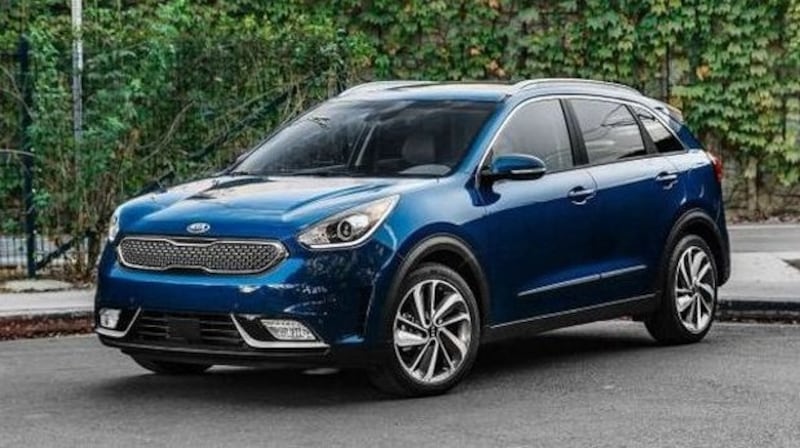
You could accuse the Kia Niro of being a touch bland to look at. Certainly, if it were parked between the much more striking e-Soul and the smart-looking Proceed or XCeed in a Kia showroom, you'd possibly struggle to pick the Niro out. But it's one of those cars that are better under the skin than they are on top. You can have it as either a plug-in hybrid (the old plain hybrid model has been dropped) or as a fully electric car, and both have their charms. The fully electric model, with its big, 64kWh battery, will easily travel between, say, Dublin and Cork on a single charge of the battery (it has a quoted range of 420km), so takes the range anxiety out of electric motoring (assuming you can charge at home). The plug-in hybrid version is for those who want to dip a toe in the electric-car market without full immersion just yet: charge it up and it'll go 65km on its battery, but it also has a normal petrol engine for longer journeys. Pleasingly, it doesn't get too thirsty when running as a hybrid: 4.5 litres per 100km is possible. Fun to drive? Not really, but it's roomy and satisfying, so focus on the ecofriendliness instead.
Best model: e-Niro 64kWh Long Range, for €37,634.
Price range: €31,850 to €37,634. Finance from €338 per month.
CO2 emissions: 0g/km to 31g/km.
Summed up: Lacks for thrills but has small bills.
49. Ford Mustang
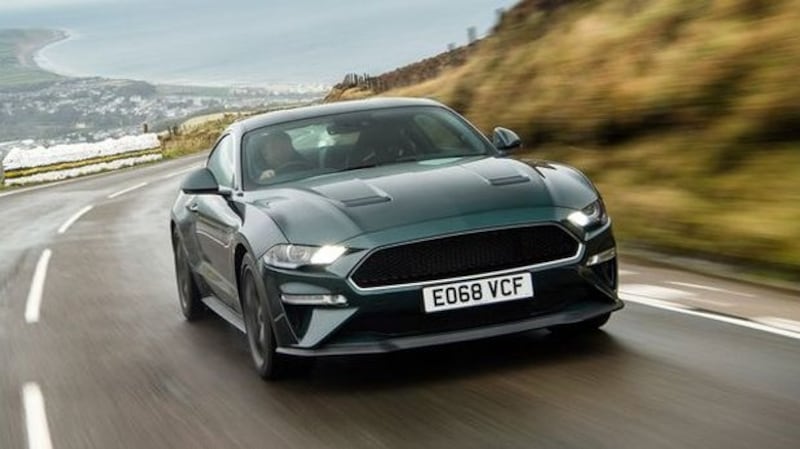
The Ford we're waiting for, possibly the car for which we're most on tenterhooks in 2021, is the Ford Mustang Mach-E, an all-electric SUV with styling pinched from the Mustang Coupe, which wants to take on Tesla at the top of the electric-car world. However good (or bad) it proves to be, there will always be one caveat to this new electric star: it's not a proper Mustang. Then again, few cars are. You can make so many arguments against the Mustang. That it's cheap inside but expensive to buy. Fast but not especially fluent. Impractically small in the back. Shown up by the likes of a BMW 4 Series or Porsche Cayman dynamically. That, with a choice of a 2.3-litre four-cylinder turbo or a 5.0-litre V8, it's hardly at the cutting edge of engine development. That it's, bluntly, a rock ape of a car. All true, and all entirely missing the point. The unending appeal of the Mustang is down to that muscular shape, that V8 whoofle, that sensation of sheer joy as the next gear in the hefty-feeling manual gearbox (please don't buy an automatic Mustang…) slots home. Crude? Yes. Old fashioned? Absolutely. And we wouldn't have it any other way.
Best model: Mustang Bullitt, for €79,935.
Price range: €52,201 to €79,935. Finance from POA per month.
CO2 emissions: 204g/km to 287g/km.
Summed up: Outmoded, outdated, out of time. But never out of our hearts.
48. Aston Martin DBX
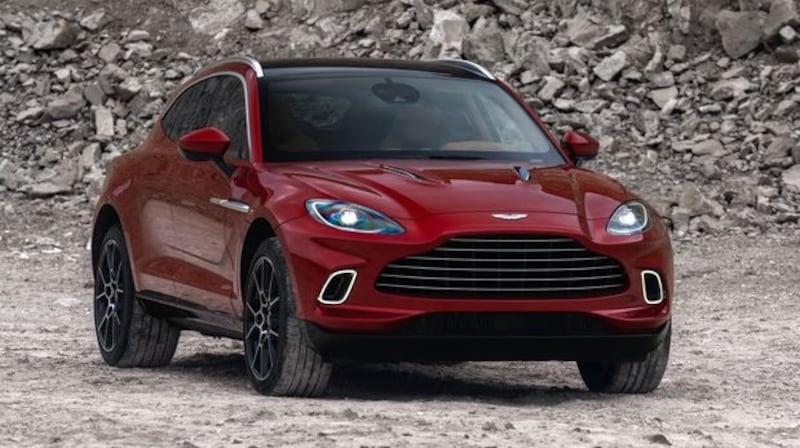
Yes, the DBX is yet another in the long list of recent high-end SUVs with large, profligate engines and sybaritic cabins. Clearly, the world's carmakers have cottoned on to the fact that the 1% like sitting up high and going fast, and by gum they're going to fill that need. The thing is, the DBX feels a little different from most. Unlike, say, the Porsche Cayenne, or the Lamborghini Urus, or the Bentley Bentayga, it doesn't use a cast-off Volkswagen platform. Instead it uses Aston Martin's own, bespoke aluminium-and-carbon chassis, which makes it feel far more agile and far lighter on its toes (well, for a 2.2-tonne SUV) than those rivals. It's properly fun to drive but also refined and soothing on a longer run. The big black mark against it is that, right now, there's only a single 4.0-litre V8 engine option (lovely though that is, sourced from Mercedes-AMG). The better news is that plug-in hybrid and, eventually, fully electric versions are on the way. Hugely roomy inside but perhaps not quite so well made as a Bentley. Styling is conspicuously sexy – ignore those who say it's just a posh Ford Kuga.
Best model: Only one for now.
Price range: Circa €280,000 imported. Finance from POA per month.
CO2 emissions: 323g/km.
Summed up: Room for Bond and half of Spectre.
47. Audi Q3
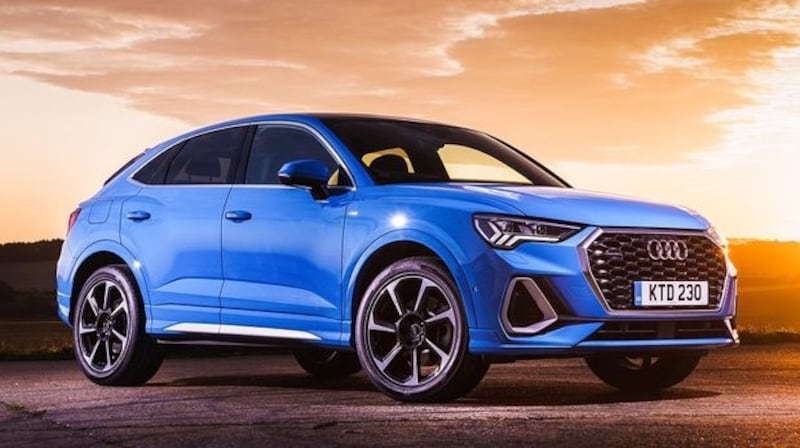
Audi's midsize crossover is a surprisingly decent device. We say surprisingly because the original Q3 was very far from being one of our favourites. It was a little dumpy to look at and rather tight on space in the back. This time around Ingolstadt has made no such mistake: the Q3 looks sharp on the outside and has plenty of room on the inside. Indeed, you'd start to wonder if it's worth the extra outlay to upgrade to the larger Q5. You'll especially wonder that when you've driven the Q3, as it's really quite good – not a tall hot hatch or anything, but willing and precise. The 1.5-litre turbo petrol TSI engine is the sweet spot of the range, providing plenty of power yet getting good economy on longer journeys. The Q3 also has the benefit of having a cabin that looks smooth and sleek rather than the slightly overdesigned interior of its closely related brother, the new A3 hatch and saloon. The chopped-top Sportback version is actually very appealing, and we normally don't care for such SUV-coupé-type things.
Best model: Q3 Sportback 35 TFSI S-Tronic SE, for €42,690.
Price range: €39,400 to €57,155. Finance from €330 per month.
CO2 emissions: 144g/km to 206g/km.
Summed up: A truly satisfying compact SUV.
46. Tesla Model X
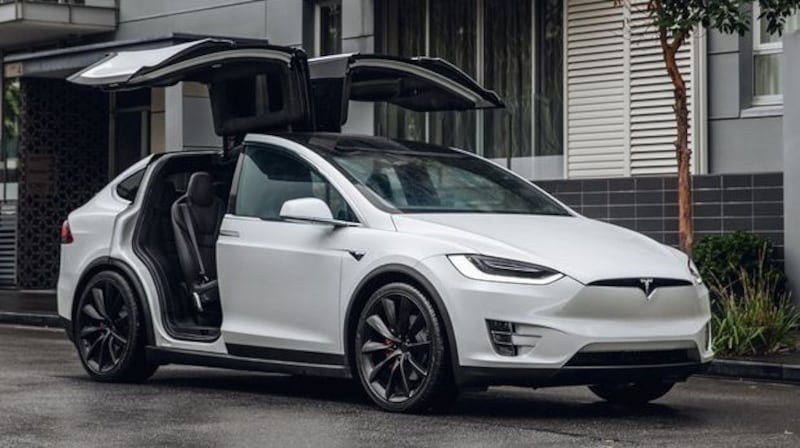
The big Tesla is as brilliant as it is frustrating. Or perhaps that should be as frustrating as it is brilliant. No one else has yet cracked Tesla's code for getting as much range out of its batteries, so if you want to have an electric car, right now, that can cope with pretty much any journey you throw at it, then the Model X is probably your best bet. It helps that Tesla's own-brand "Supercharger" charging network makes most national networks look pretty hopeless in terms of speed, availability and reliability. Then there's the sheer level of drama and entertainment, from the Star-Trek-like "falcon" doors that open up and out, to the games and even the whoopee-cushion fart noise built into that vast central touchscreen. Oh, and let's not forget the Porsche-bothering 0-100km/h times, either. Then come the frustrations, though. Persistent quality glitches. Annoyingly uncomfortable seats. The top-heavy handling and ride. The persistent overselling of the Autopilot system, which no matter what Tesla says is just cruise control with knobs on. The sensation that you're almost buying into a cult as much as you're buying a car. Still, though: spend a happy morning bothering BMWs away from the lights before topping up the batteries at a super-rapid Supercharger and you'll see that this is closer to the future of motoring than most.
Best model: Model X Long Range Plus, for €89,490.
Price range: €89,490 to €104,990. Finance from €1,338 per month.
Electric range: 548km to 561km.
Summed up: Brilliant in many areas, bloody annoying in some.
45. Dacia Duster
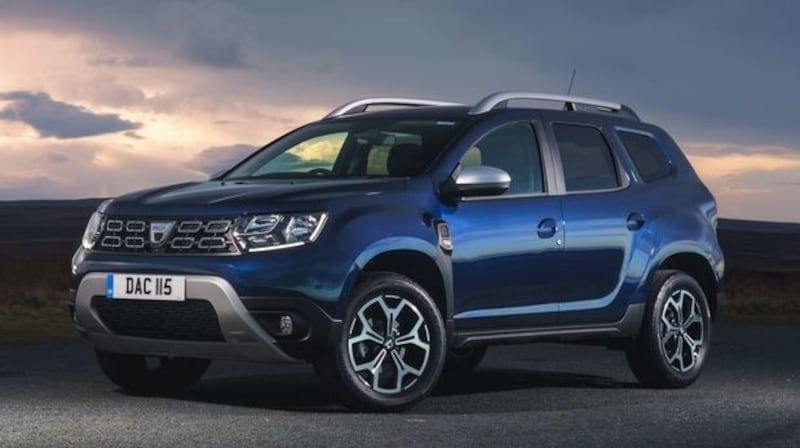
If you're not buying your Dacia Duster in absolutely bog-basic spec – white paint, with steel wheels and not a single adornment – you're doing it wrong. Yes, the Duster, in this second-generation form, has become much more sophisticated, with versions that even come with leather trim (!), a touchscreen (!!) and a surround-view camera (!!!), but the whole point of the Duster is that it's cheap, simple, rugged motoring. So do yourself a favour and forget any notions of blinging one up: just buy the simplest, cheapest Duster there is. For less than the price of a basic Ford Fiesta you can have a Duster with all the bits you need (daytime running lights, Isofix child-seat points, trip computer, air conditioning, plenty of airbags, a speed limiter and roof bars) and none of the stuff you don't. Plus, because Dacia has ramped up the Duster's sophistication under the skin, you now get the nice 100hp three-cylinder petrol turbo engine, from the Renault Clio, on that cheapest model, not the wheezy old 1.6-litre petrol you'd have previously been saddled with. Is it fun to drive? Aspirational? Capable of inducing jealousy in a neighbour? No, but that's not the point. It's transport, basic, simple transport, and for that price you'll not be complaining.
Best model: Duster 1.0 TCe Essential, for €17,946.
Price range: €17,946 to €25,138. Finance from €149 per month.
CO2 emissions: 128g/km to 149g/km.
Summed up: Simple is as simple does.
44. Mazda MX-5

When the final history of the motor car comes to be written, a whole chapter is going to have to be set aside for the Mazda MX-5. The little roadster from Hiroshima has been around since the first Bush administration (for those who like measuring things in US presidencies), yet right now we need it more than ever. With a triple whammy of legislation, environmental pressure and autonomous tech threatening to forever remove the fun from motoring, the MX-5 – better in its current, fourth generation than it's been since that pop-up-headlight original – remains a perfect touchstone of distilled motoring. It's fantastically good to drive, with steering, suspension and grip working in near-perfect harmony, but can be had with a delightful little 1.5-litre engine that isn't going to put much of a dent in anyone's iceberg. It's practical enough to use every day yet feels right at home on a racetrack. And, by driving one to the frozen northernmost tip of Norway in the dead of winter, we've proved that it's as versatile as any 4x4.
Best model: MX-5 1.5 Roadster, for €31,345.
Price range: €31,345 to €36,945. Finance from POA per month.
CO2 emissions: 142g/km.
Summed up: The sports car, distilled.
43. Volvo S60/V60
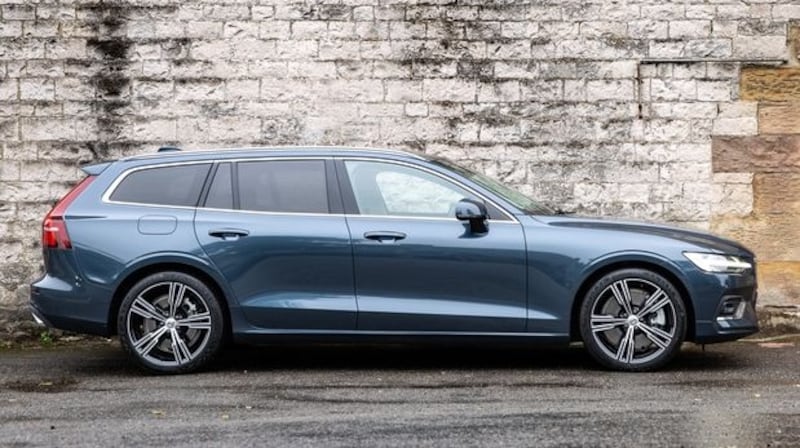
Although, like so many other brands, Volvo is concentrating ever more on its SUV and crossover lineups, it's actually the V60 estate and S60 saloon that, right now, make for the best all-round cars from Sweden. Yes, they're traditional, but that's kind of the point. These days you can take slinky style as being just as high on Volvo's list of attributes as safety, and that's definitely the case for this handsome duo: for every carefully honed line there's another clever bit of safety kit, up to and including steering that can take over and swerve you away from an incoming collision. Inside, the cabin design is familiar, drawn largely as it is from the bigger S/V90, XC90 and XC60, but it's no worse for that, and quality levels are just as excellent. As are both refinement and comfort levels. Sporty levels? Well, kind of. Go for a T5 version in R-Design trim and the 60 series Volvo is both rapid and agile, but you can kind of tell that it's not entirely happy in this role. Better to go for one of the new plug-in-hybrid versions or, if you're doing megamiles, one of the ageing but still game diesels. The lifted-up V60 Cross Country looks, at first, like the answer to a question no one was asking, but on balance it actually feels like a better all-round solution than an XC60 SUV. Polestar Engineered plug-in-hybrid models have tearaway performance and glowering good looks.
Best model: V60 Recharge R-Design Plugin-Hybrid, for €63,582.
Price range: €44,450 to €78,763. Finance from €259 per month.
CO2 emissions: 40g/km to 160g/km.
Summed up: Sensuous Swede.
42. Lexus LC
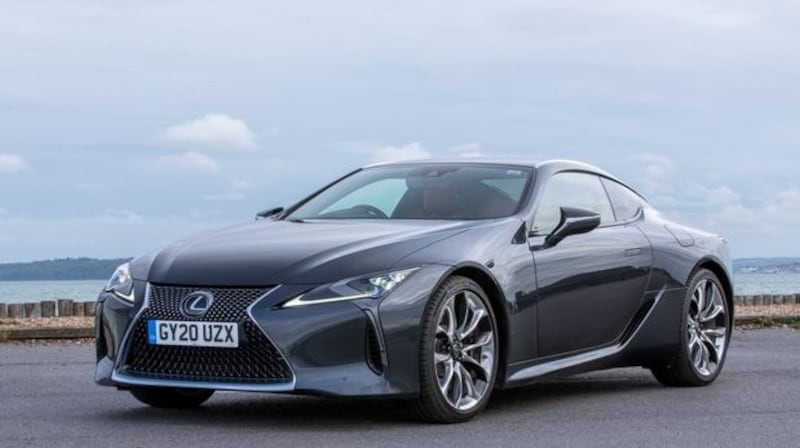
Can a Lexus be as desirable as a Ferrari? As perfectly crafted as a Mercedes? As eye-catching as a Lamborghini? If it's the big LC Coupé we're talking about then, yes, all three. This is Lexus at its best, and although it's (relatively) easy to make a big, fast, luxurious, expensive two-door both eye-catching and impressive, what's really impressive is just how good a car this big Lexus is. While the likes of the ES saloon and LS luxury car are close but no cigar when it comes to comparing them to their (mostly German) rivals, here is a Lexus that we'd take over and above even cars from Maranello. The hybrid V6 engine isn't quite perfect – its acceleration still feels a little elastic, even if it's very quick against the clock, and it's a very heavy car – but as a way of getting from, say, Munich to Milan via the Alps, in the shortest time with the most fun (we've actually done this with an LC, and it beats flying) it's staggeringly hard to beat. Best-looking car ever to come out of Japan? Just maybe, yeah.
Best model: LC500h Sport, for €128,305.
Price range: €114,340 to €128,305. Finance from POA per month.
CO2 emissions: 184g/km.
Summed up: A sexy Lexus? Yes.
41. Seat Ibiza
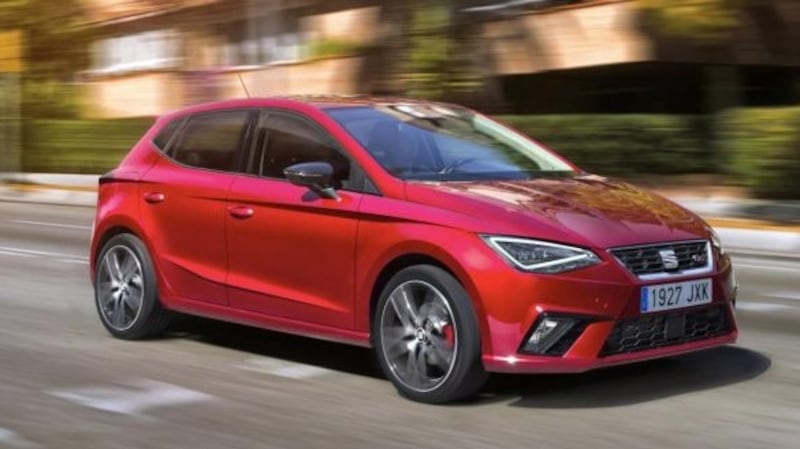
Seat's small hatchback just pokes its nose in front of the rival Volkswagen Polo – which is, of course, exactly the same car. The thing is that the Polo definitely looks and feels rather more sophisticated, and when you spec it up with plenty of equipment and the brilliant 1.0 TSI turbo petrol engine, you start to wonder why you'd buy a Golf. Then you realise you're spending as much as you would on a Golf, so go and check out the Seat price list instead. There you will find that the Ibiza looks smart, drives well, is exceptionally well made, and is still capable of feeling sophisticated if you bung a bit of spec on it. The only point where it lags behind the Polo a little is in the cabin design and quality. That and, of course, the fact that you may consider the stylised "S" of Seat to be less appealing than the conjoined "V" and "W" of Volkswagen. Is the badge worth the extra outlay? We guess ultimately that's up to you to say.
Best model: Ibiza SE Plus 1.0 TSI 95hp, for €20,345.
Price range: €19,875 to €27,040. Finance from €169 per month.
CO2 emissions: 122g/km to 138g/km.
Summed up: Value-for-money small hatch.
40. Audi Q8
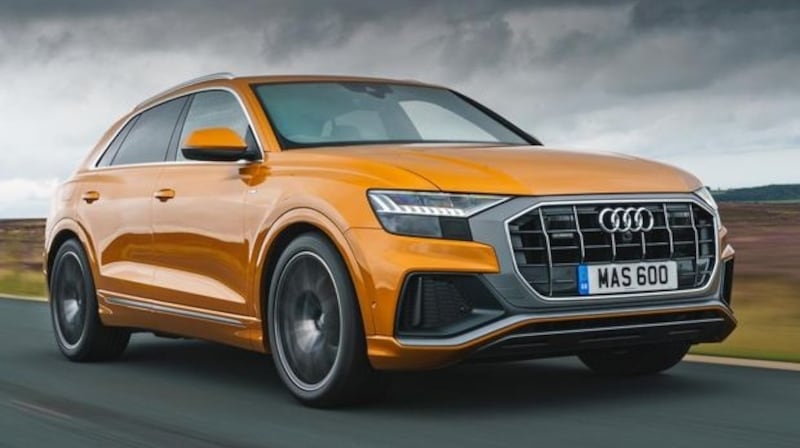
Audi has managed to take some of the guilt out of craving a Q8 – otherwise the very definition of a guilty pleasure – by introducing a plug-in-hybrid model. With CO2 emissions trimmed to just 66g/km, and a potential 50km electric-only range, suddenly it feels rather more saintly to be cruising around in this devilishly good-looking large SUV. Meant to kinda-sorta be a coupé version of the bigger, more practical Q7, the Q8 actually carves out its own identity, looking substantially lower, leaner and much, much meaner. If you met one, unexpectedly, in a dark alley, you'd be frightened, so glowering and menacing is its countenance. Inside, it's an interesting mix of low-slung and closely fitting, while still managing to be roomy and practical in the way SUVs are supposed to be. It's also really good to drive. Big V6-diesel models are superb if you can deal with your conscience, but we think we'll hold out for the arrival of the 60 TFSI-e version, with its 462hp powertrain, and save ourselves a little bit of time spent on environmental time-out. The mad RS-Q8 variant packs the 600hp version of Audi's twin-turbo V8 engine and is clearly for those for whom fuel bills are no object.
Best model: Q8 TFSI-e 60 for TBC.
Price range: €97,865 to €POA. Finance from POA per month.
CO2 emissions: 66g/km to 276g/km.
Summed up: New plug-in-hybrid Q8 salves our guilty conscience.
39. Ford Fiesta
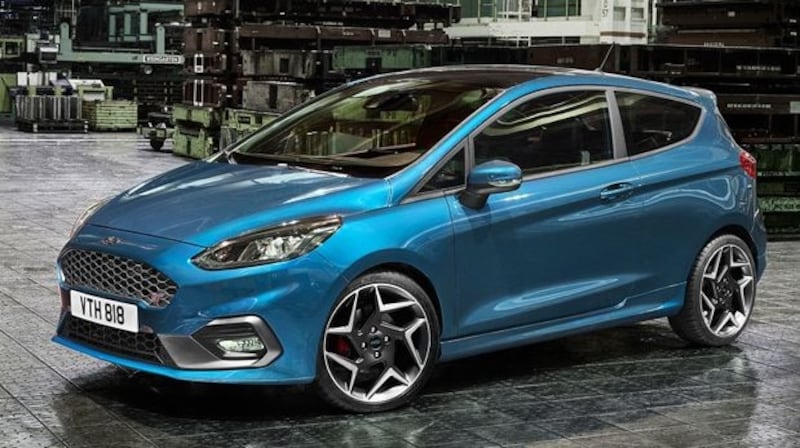
Ford's evergreen Fiesta has slipped down the bestseller list, overtaken by bigger, chunkier cars which prove that if you offer a low-enough monthly repayment, people will think it means good value is on offer. Which, equally, proves that most people aren't paying attention, because it's small hatchbacks like the Fiesta that still offer the best value on the market. Although prices have definitely crept up in the past couple of years, a basic Fiesta remains a paragon of good-value motoring: reasonably spacious, well made, a frugal little 1.1-litre engine, and a chassis that has clearly been designed and engineered by people who know what good steering and responsiveness feel like. While other car makers force you to upgrade to expensive, sporty models to experience this, Ford bakes it into its most affordable car – and, frankly, amen to that. You can now get the Fiesta with the excellent 1.0-litre mild-hybrid EcoBoost engine, but the one you really want is the mighty 200hp Fiesta ST – still one of the very best hot hatches, at any price.
Best model: Fiesta ST-Line EcoBoost Hybrid, for €22,583.
Price range: €18,685 to €29,394. Finance from POA per month.
CO2 emissions: 113g/km to 158g/km.
Summed up: As much fun at the base of the range as at the top.
38. Mercedes-Benz CLA
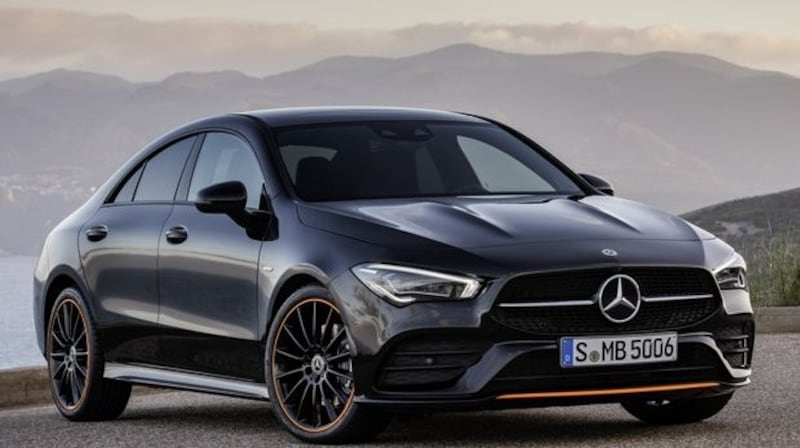
The CLA has some uncomfortably big boots to fill, as its predecessor was often the bestselling model in all of the Mercedes lineup in Ireland. It also has new, in-house competition, in the shape of the Mercedes A-Class saloon, which uses the same chassis, engines and interior and is about €1,000 cheaper . So why do we prefer the CLA to the A? And why, indeed, has the CLA now supplanted the more traditional, rear-wheel-drive C-Class saloon in our affections? Clearly, styling has to come into it: the CLA looks more slinky and more Instragrammable than either of its bedfellows, and it's also very good to drive, somehow slicker behind the wheel than the A-Class, and not too slack compared to the still-excellent C-Class. It's oddly refined, and we say oddly because the A-Class is less so, yet the CLA has frameless door glass, which is normally a fast track to wind noise at speed. It's even very economical, with 50mpg possible on a long run from the 1.3-litre turbo petrol engine, and more than 60mpg doable from one of the diesel options. Worth the extra over the A-Class four-door? Worth the downgrade from the C-Class? Oddly, yes, we think it is. The quirky estate version is rather likable, too, and plug-in-hybrid model is imminent.
Best model: CLA 200 AMG-Line DCT, for €44,807.
Price range: €34,850 to €88,575. Finance from €390 per month.
CO2 emissions: 22g/km to 194g/km.
Summed up: Slinky and smooth to drive.
37. Honda Civic
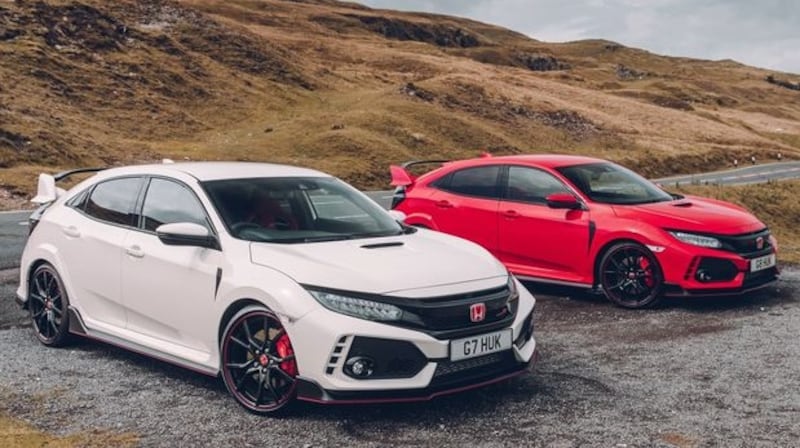
The Civic just doesn't, for some reason, get the love it deserves. That's possibly because it kind of splits itself across two segments, being more or less Golf-priced at the bottom end but quickly ramping up to a Passat price when you start adding options or looking at higher-end models. It's also looking a touch old-fashioned right now, as in spite of Honda's recent drive for electric and hybrid powertrains, the Civic still comes with a choice of old-fashioned petrol or diesel. Still, the petrol choice is pretty good: the 1.5-litre 180hp turbo engine is lovely but not as sweet as the little 125hp 1.0-litre three-cylinder turbo unit, which is a perfect example of why we hold Honda in such high regard as a maker of engines. The Civic is also uncommonly good to drive, and comes perilously close to lifting the handling-champ cup out of the hands of the Ford Focus. On top of which it's a bit bigger than a Golf or Focus (and certainly bigger than a Corolla), so it's wonderfully spacious inside, with a huge boot – if you're buying with family life in mind, these things really matter, or at least ought to. And then there's the Type-R – all wings and screaming 300hp-plus engine, with chassis and steering responses to shame even the likes of a BMW M135i or Mercedes-AMG A35.
Best model: Civic 1.0 Tech Smart Pack Plus, for €27,385.
Price range: €23,810 to €51,750. Finance from POA per month.
CO2 emissions: 117g/km to 193g/km.
Summed up: Makes much better sense than many rivals.
36. Volvo XC40
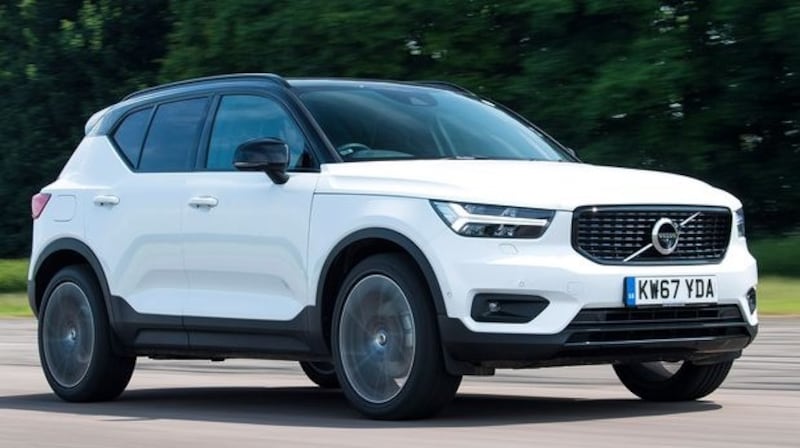
Why do we like the Volvo XC40 so much? Two reasons. First, it is one of those rare SUVs or crossovers that feature properly rectilinear styling. (Note to all carmakers: SUVs are supposed to be upright and a bit square.) Second, you can have it with a fuzzy, tactile trim on the inside of the doors that looks and feels like genuine Muppet skin. Name one other marque that makes you think of The Muppets when you get behind the wheel. Speaking of which, the XC40's interior is rather lovely, with very good quality and nice options, such as an "open pore" wood trim that's delightful to the touch. This SUV is good to drive, too, with well-balanced agility and ride, and the option of a very impressive plug-in-hybrid T5 model. If that's a bit pricey (and it is) then a cheaper, slightly less powerful T4 plug-in-hybrid is arriving shortly. Good space in the back and boot makes the XC40 practical for families, but the stylised rear pillar, with that big, angled panel, makes over-the-shoulder visibility a bit tricky.
Best model: XC40 Recharge R-Design, for €55,200.
Price range: €38,297 to €55,600. Finance from €259 per month.
CO2 emissions: 47g/km to 168g/km.
Summed up: Looks like Lego, has a Muppet-lined interior. Which is why we like it.
35. Seat Ateca
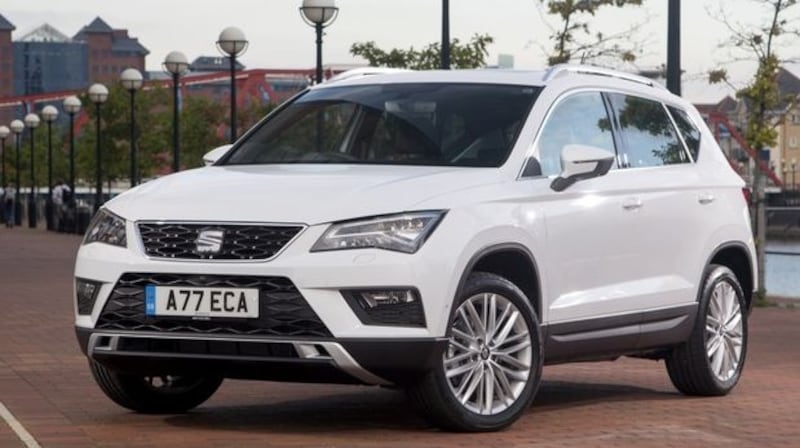
Seat's deservedly popular SUV has been given a brisk update for the 2021 model year, with new styling at the front and a (slightly awkward-looking) handwriting-style badge at the back. Look inside and you'll find an upgraded infotainment system with more connectivity options, and the chance to tick the box for a full digital instrument panel. Other than that, not much has changed, which is fine by us, as the Ateca's core strengths were already well established. Chiefly, those are that it's spacious, comfortable, well made and – the critical bit – basically a Volkswagen Tiguan with a slight discount. On top of which, in common with many other Seat models, relative to their Volkswagen Group in-house competition, the Ateca is also just a fraction more fun to drive than the likes of the Tiguan or Skoda's Karoq. So why does the Tiguan continue to outsell the Seat? Dunno. Badge snobbery? Quite possibly, as there's really not much between the two cars in any objective sense. Ignore the once-default diesel models and instead plump for one of the two petrol engines; the 1.0 TSI is plenty adequate if you're doing most of your driving around town, but the 150hp 1.5-litre petrol is a better all-rounder, and not much thirstier (albeit both will cost you much more to run than an equivalent Leon, but that's the SUV life).
Best model: Ateca SE Plus 1.5 TSI, for €33,185.
Price range: €29,835 to €43,565. Finance from €259 per month.
CO2 emissions: 141g/km to 161g/km.
Summed up: As good as family SUVs get, but we'd still rather have the Leon.
34. Mercedes-Benz GLB
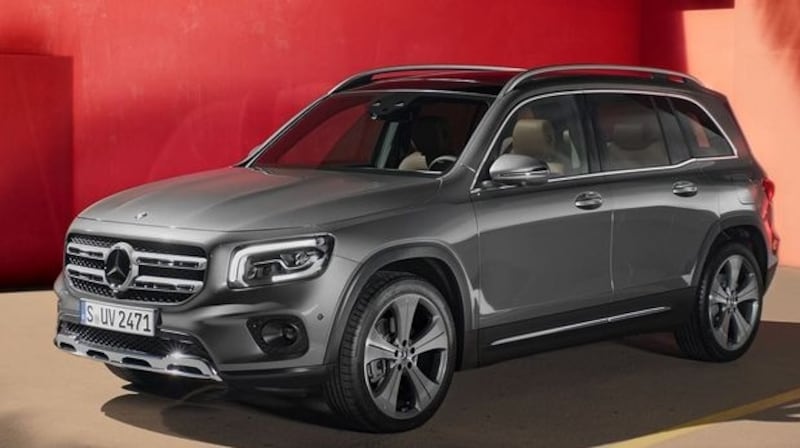
Of all the vehicles spun off from Mercedes' NGCC platform – NGCC stands for New Generation Compact Class, and it's basically the German giant's front-drive chassis – we think that the GLB is probably our favourite. The G in the name refers to the mighty G-Class, nee G-Wagen, Merc's antediluvian off-roader, in production ever since the 1970s. As well as taking part of its name, the GLB takes part of its styling, so it is resolutely upright and square-edged, in an age when most try to disguise their SUVs as overgrown hatchbacks. That makes it hugely roomy inside, where there's ample space in the back seats, and room for an optional folding third row in the boot. Up front you've got the gorgeous "digital plank" MBUX digital dashboard, as found in all cars spun off from the current A-Class hatchback, and a range of decent, if perhaps not exceptional, petrol and diesel engines. There's no hybrid model as yet, but next year should see a fully electric version, badged EQB, which could be something of a mould-breaker for the electric-SUV segment. The GLB is fine to drive: it's no drivers' machine, but it cruises nicely, is comfortable over bumps and never feels less than solid and secure. We don't think we've ever found a car that needed a Sport mode less (it does have one), but that's actually a compliment. What the GLB does, rather brilliantly, is feel exactly as it is badged: a smaller, more affordable, more accessible member of the G family.
Best model: GLB 200d Progressive, for €52,231.
Price range: €42,350 to €POA. Finance from €473 per month.
CO2 emissions: 143g/km to 194g/km.
Summed up: Square SUVs are proper SUVs.
33. Opel Corsa
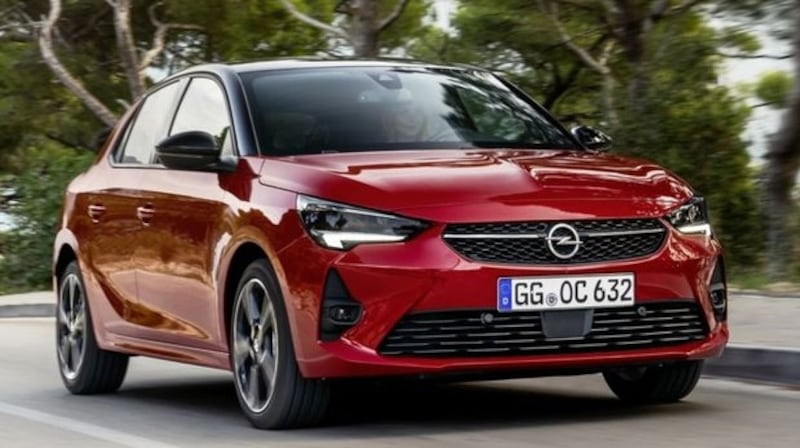
Previous generations of the Opel Corsa were, to put it mildly, no one's idea of a good time, but the new version has, thanks to the intervention of Opel's new French owners at PSA Group, performed rather better than that. It shares a chassis with the Peugeot 208 and Citroën C3 but lacks almost entirely the styling flair of those two. It just about avoids being staid, however, and instead manages to be just quietly handsome. As with that exterior, the cabin seems designed for those for whom the 208's cabin would be just too avant-garde. Which is fair enough, and the Corsa at least has good quality, and the benefit of simpler controls than the French duo (by which we mean it doesn't put everything on to the touchscreen). Comfort levels are high, and with the 1.2-litre turbo petrol engine the Corsa feels zippy and engagingly agile. The all-electric Corsa-e is a thoroughly impressive electric car, with a 350km range, but fails to control its extra mass with the same aplomb as the Peugeot; in Elite spec, however, the Corsa-e offers decent value compared with the French cousin.
Best model: Corsa 1.2 SC Premium, for €18,895.
Price range: €17,850 to €30,133. Finance from €170 per month.
CO2 emissions: 0g/km to 127g/km.
Summed up: The yin to Peugeot's yang, but quietly competent.
32. Toyota Rav4
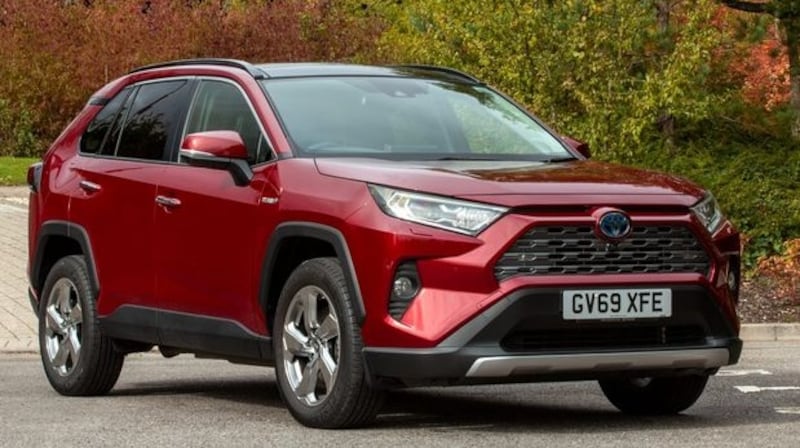
The surprising thing about the Rav4 is not that it's (a) good and (b) really quite frugal – you'd expect both things to be baseline stuff with Toyota. No, the surprising thing about the Rav4 is that it's quite a rugged machine, capable of dealing with more rough and tumble off-roading than you might expect. That, says Toyota, was the whole point of this generation of Rav – to be more of a bridge between the small, urban-focused C-HR and the big, tough Land Cruiser. It actually does bridge that gap rather nicely, what with its flat-bonnet, square-edged styling and interior switchgear topped off with tactile rubber grips. As long as you go for the four-wheel-drive version, which uses its hybrid electric motor to drive the rear wheels, it's much more capable in the mud and dirt than you'd think. It's also oddly satisfying to drive: in spite of inert steering, and lots of body roll, there's still an inherent, and very pleasing, rightness to the way the Rav4 gets about. Equally pleasing are the roomy, well-made (if rather plain) interior and the environmental credentials of the hybrid powertrain. A plug-in-hybrid option is on the way, but what we really want to see is someone importing the fantastic new Mitsuoka Buddy, which takes a Rav4 and sticks a 1960s American-style body on top.
Best model: Rav4 Luna 4WD, for €42,760.
Price range: €36,770 to €42,715. Finance from €297 per month.
CO2 emissions: 127g/km to 131g/km.
Summed up: So much better to drive than you'd expect.
31. Mazda CX-30
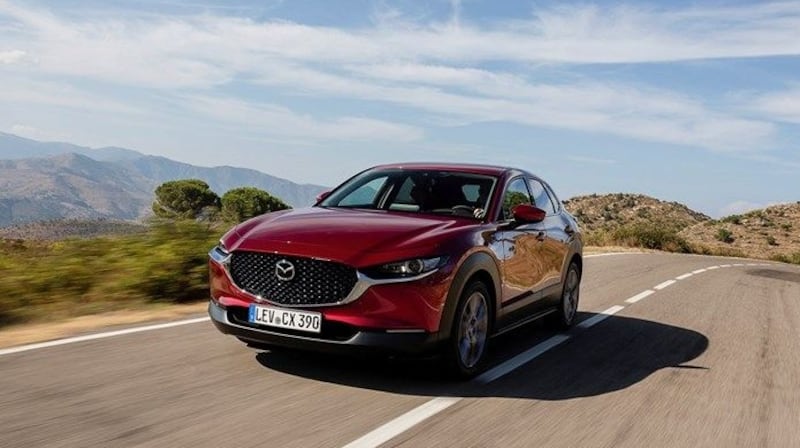
Crossovers aren't meant to be fun to drive. They're meant to be exercises in styling and marketing, as the carmaker's advertising department tries to convince you you're buying into an ideal life of mountain-biking and windsurfing, but actually you're just buying a more expensive family hatchback with taller springs. Mazda clearly didn't get the memo. I mean, it's pretty obvious that the CX-30 is just a Mazda 3 with a body that's slightly more buff, and some black plastic glued to the edges of the wheel arches, but it's also more than that: it's roomy enough for family life, and just about rugged enough for dealing with unmade roads and country goat tracks. Plus, it really is fun to drive, with excellent steering and a cultured chassis that means, once you've dropped the kids off or the shopping home, there's genuine enjoyment to be had from a properly tuned dynamic performance. The SkyActiv-X engine, with 180hp and promise of diesel-like economy, is a mixed bag, but the basic 122hp mild-hybrid engine is just fine, albeit you need to remember how to rev it and use the gearbox to get the best from it. No hardship, to be honest, even if the CX-30 is a bit pricey for its own good.
Best model: CX-30 SkyActiv-G GT, for €32,995.
Price range: €29,095 to €42,715. Finance from €254 per month.
CO2 emissions: 133g/km to 160g/km.
Summed up: So much better to drive than you'd expect.
30. Kia Ceed
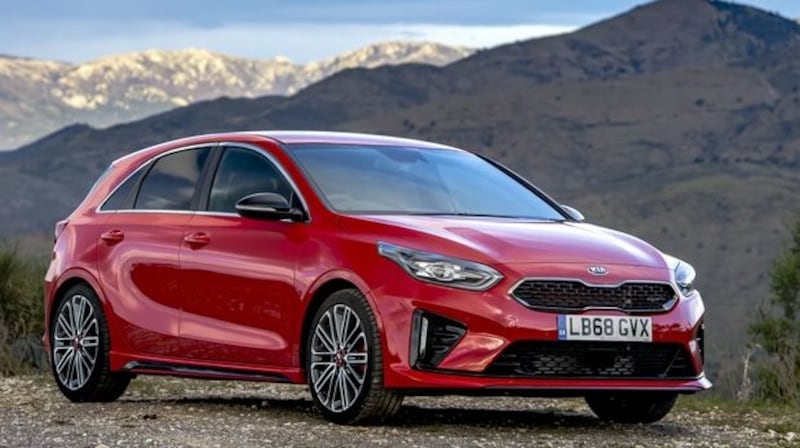
The ever-popular Ceed has moved up a notch in our estimation this year, primarily because Kia keeps spinning off new and interesting variants. The core (and, one might add, competent) Ceed models, the hatchback and the SW estate, are perfectly fine cars, with roomy, well-made cabins, decent on-road dynamics, and that long, long warranty. But then we get to the interesting spin-offs, such as the Proceed, which is a coupé-estate-shooting-brake (maybe). Whatever, it looks like a Porsche Panamera from behind and is really very good to drive, but also practical and relatively affordable. Then there's the crossover XCeed, which, again, looks Porsche-like from the back (a Macan this time) and deftly mixes crossover appeal with hatchback practicality. There's a plug-in-hybrid option for both Ceed and XCeed now, too. The Ceed has long been a sensible, value-for-money choice. By expanding the family, Kia is rapidly turning it into an emotive choice, too. Base prices can look a bit hefty compared to some rivals', but Kia stuffs its cars with better standard equipment, so make sure you're comparing like with like.
Best model: Proceed GT-Line, for €29,285.
Price range: €24,700 to €31,410. Finance from €293 per month.
CO2 emissions: 38g/km to 146g/km.
Summed up: Gets better every year.
29. Lexus UX
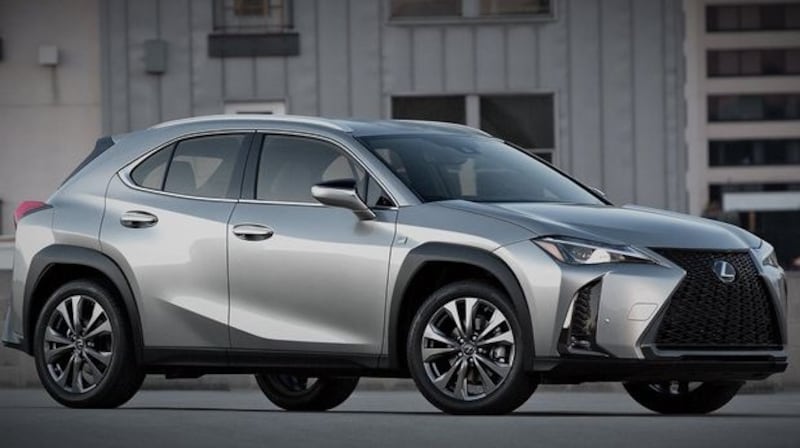
Lexus's smallest car (now the CT200h is a goner) is actually one of its most impressive, taking the same flexible TNGA platform that you'll find under most current Toyota models and adding the hybrid powertrain from the Toyota Rav4. The combination makes for not one of the most practical cars you'll ever drive – space in the back seats is only average at best, and the boot is quite tight – but it is surprisingly entertaining to drive. It's one of those cars where you can really sense the rigidity in the body structure, and the combination of smooth steering and sharp chassis responses makes it genuinely rewarding. Arguably the most rewarding part, though, is sitting there in one of the classiest and highest-quality cabins around, having not blown your budget out of the water. The hybrid system is also impressive; it does a lot less of that long-moo sound when you accelerate hard, and it proves very frugal in real-world, everyday use. The UX300e all-electric version, arriving any day now, is the first fully electric model on sale from either Lexus or Toyota, with a 300km range.
Best model: UX250h Luxury, for €45,090.
Price range: €40,430 to €45.090. Finance from €316 per month.
CO2 emissions: 119g/km to 187g/km.
Summed up: Small, but still big on luxury and quality
28. Range Rover Evoque
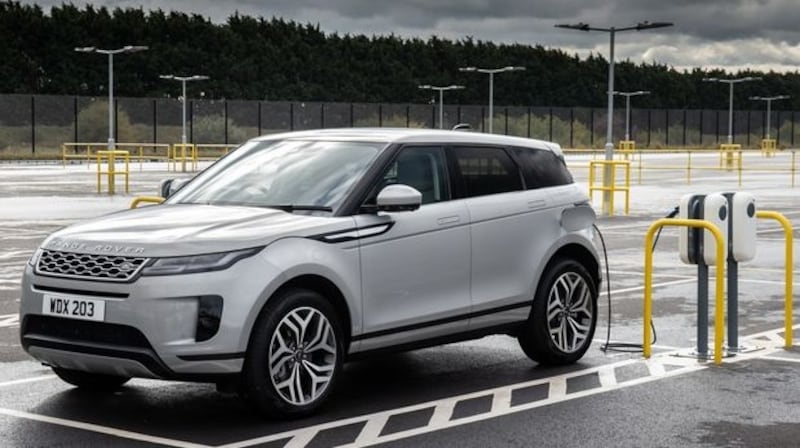
Land Rover seems to be on a constant round of updates for its smallest and bestselling model. No sooner had we test-driven the new Evoque than more variants and yet more improvements were rolling out, be it a new plug-in-hybrid version or the imminent arrival of Land Rover's impressive new touchscreen infotainment system. All this in a car that looks only barely different from its 2011 predecessor – but then the Evoque always sold on its style, so maybe it's not surprising that Land Rover didn't change that much. The new P300e plug-in-hybrid version is especially impressive, with the potential to get huge fuel economy (although it's variable – on one journey we scored 202mpg, on another 42mpg), and to be able to run around on electric-only power for up to 55km. The cabin, much improved on the old one in quality terms, is delightful, and we love the new wool-based alternative to leather trim. Perhaps the most surprising thing about the Evoque is how much fun it is: get it on to a truly challenging, twisting road and the rewards for a keen driver are most definitely there.
Best model: Evoque P300e R-Dynamic, for €TBC.
Price range: €42,845 to €90,255. Finance from POA per month.
CO2 emissions: 44g/km to 203g/km.
Summed up: Surprisingly satisfying for what looks like a fashion trinket.
27. BMW 5 Series
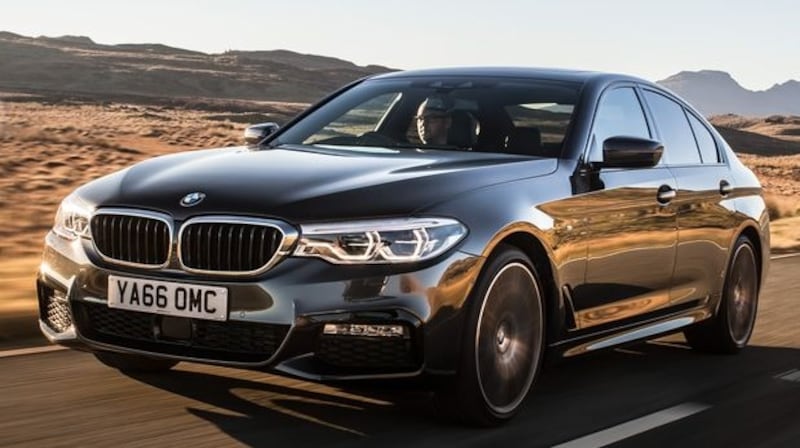
BMW's midsize four-door has just been given its midlife update, and that has allowed for the introduction of a second plug-in-hybrid variant. Sitting alongside the 530e is now the 545e, which pairs plug-in electric power with the traditional smoothness and performance of a BMW straight-six petrol engine. It's rather wonderful that, in finding a good reason to drop diesel, BMW has also now given us the opportunity to make a straight-six 5 Series relevant again. Mind you, the extra cost over and above the 530e probably relegates it to also-ran status in the 5 Series line-up. The old default-choice 520d is still excellent, if you can justify running a diesel, while the mighty 600hp M5 remains one of the most stunning of all high-performance creations, even as rumours of a half-electric 1,000hp replacement continue to circulate. Perhaps the best thing about the 5 Series is that it hasn't yet succumbed to the encroaching ugliness of the rest of the BMW range, and for that we are at least temporarily thankful. Not as roomy inside as rivals such as the E-Class and A6, which does hold it back a bit.
Best model: 530e M-Sport, for €64,410.
Price range: €51,550 to €164,340. Finance from €345 per month.
CO2 emissions: 32g/km to 254g/km.
Summed up: Could be roomier, but it's still the benchmark to drive.
26. Renault Clio
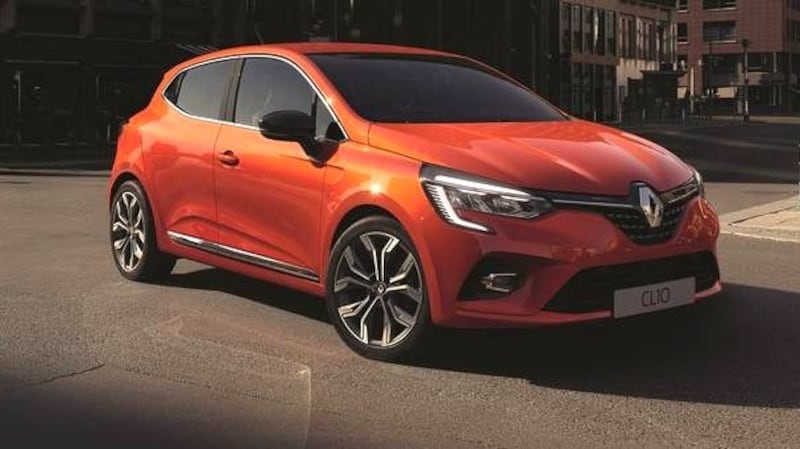
This fifth-generation Clio is arguably the biggest reinvention of the model in its 30-year history. A chance to see the latest Clio parked alongside its 1990 progenitor showed just how much more sophisticated and advanced the current car is. That would be true for any 1990-to-2020 comparison, but for a car that started out as simple and cheap as the Clio, it's quite the journey. You can have this Clio with an iPad-like 9in touchscreen, digital instruments, lane-keeping steering, automated emergency braking and much more. Happily, some of the original's traits – comfy seats, perky styling and reasonable on-road manners – have been maintained. It's a bit of a shame the Clio isn't as much fun to drive as its styling suggests, but it's still peppy enough. The 1.0-litre turbo engine is good enough to make the 1.3 option redundant, but we have high hopes for the incoming hybrid version. A shame that the handsome cabin isn't a bit better screwed together, though; the all-electric Zoe shows the Clio up a bit in that regard.
Best model: Clio TCE 100 Dynamique, for €19,106.
Price range: €17,239 to €25,207. Finance from €159 per month.
CO2 emissions: 119g/km to 187g/km.
Summed up: More chic now than it's ever been.
25. Peugeot 2008
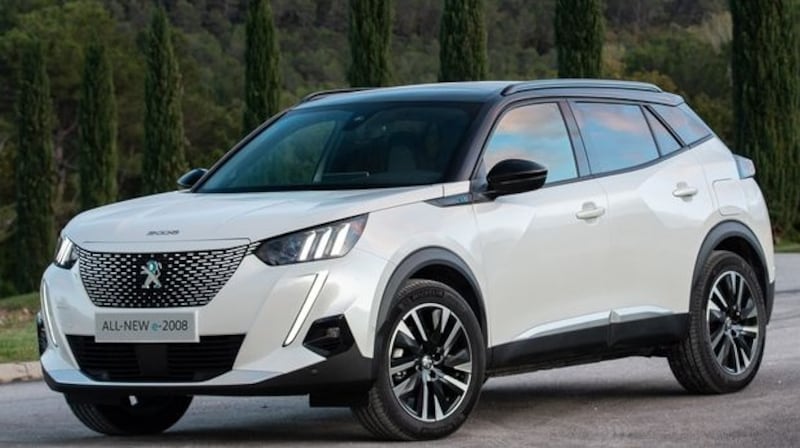
Peugeot's new styling language seems to have translated well to the 2008, which looks very much like its smaller brother, the 208, yet is very much more aggressive at the same time. It combination of dramatically slashed lines and a flat-top roof give it a pugnacious air. Not sure why SUVs and crossovers have to look aggressive; maybe their owners are compensating for something. Inside, the cabin is exactly the same as in the 208, so you get the same small wheel and high-set digital instrument screen, and the same heavily layered design, with air vents and touchscreens poking out everywhere. It has one thing that the 208 lacks, though, which is decent space in the rear seats. The electric e-2008 is impressive, and not overpriced, but lacks the extra range of the smaller car, so it doesn't suit long journeys quite so well. The best powertrain option, really, is the sweet little 1.2-litre turbo petrol unit. The 2008's handling is fine (if, perhaps, a little unexceptional), but then people tend to buy cars such as these based on style, so that may not matter much.
Best model: 2008 Allure 1.2 PureTech 130hp, for €27,150.
Price range: €23,700 to €37,535. Finance from €292 per month.
CO2 emissions: 0g/km to 141g/km.
Summed up: Striking looks inside and out.
24. Ford Focus
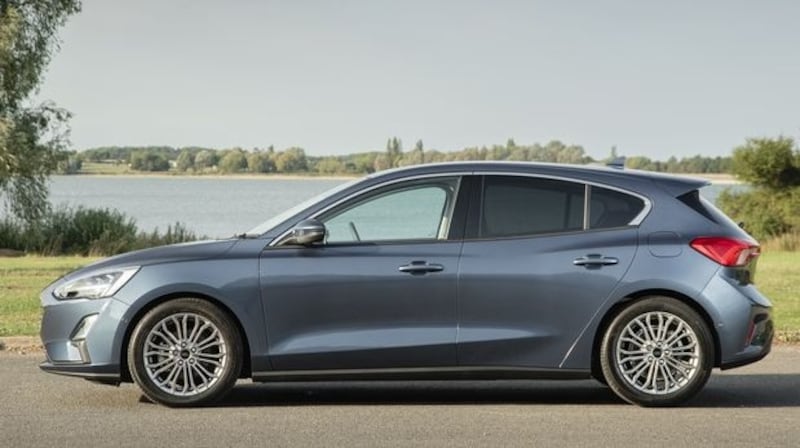
The Focus is one of those cars that seem to be improving with age. It probably helps that two rival models, the Seat Leon and Hyundai i30, pretty much nicked its styling, thus helping it appear fresher on the outside than it might have done. The cabin is still very much at the plain-and-dark end of things, but prolonged exposure has reassured us about just how well it's put together, along with the pleasing simplicity of operation of its Sync3 infotainment setup. We still think it's a shame Ford has saddled the basic versions with the cheapo torsion-bar rear suspension, but even so equipped it retains the gorgeously liquid handling sensation that has ennobled the Focus name since 1998. Customers may now be seeking out SUVs and crossovers because they're fashionable, but the Focus's delightful chassis transcends such trends. The powerful 280hp ST model is a fantastic, and visually low-key, hot hatch, while the estate models add some very useful extra practicality. The addition of the 125hp mild-hybrid 1.0-litre turbo engine from the Puma should boost the Focus's appeal to both private and business buyers, assuming they can see past the end of their SUV-obsessed noses.
Best model: Focus 1.0 Ecoboost Hybrid ST-Line Edition, for €25,287.
Price range: €23,885 to €46,908. Finance from POA per month.
CO2 emissions: 119g/km to 187g/km.
Summed up: Still the choice of the keen driver.
23. Toyota C-HR
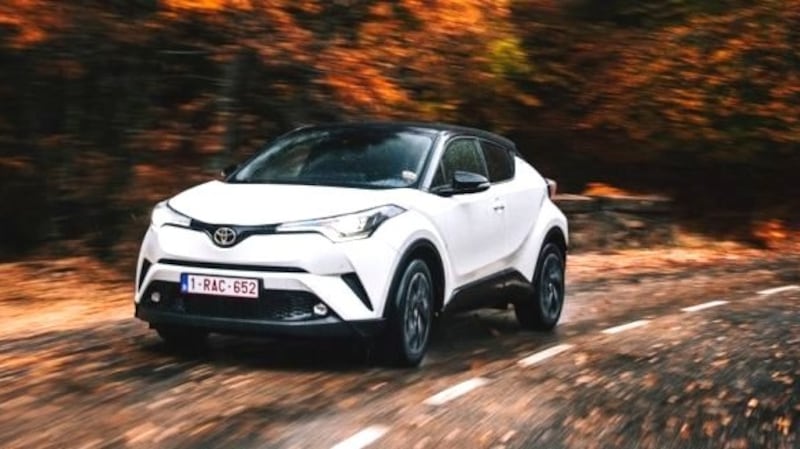
Toyota's small-but-handsome crossover continues to impress, especially now its infotainment screen has been updated to include – saints be praised – Apple CarPlay and Android Auto. This allows you to sidestep the C-HR's previous most glaring shortcoming, which was its mildly rubbish infotainment setup. Thankfully, the update didn't throw out what was previously good about the car. The styling, only mildly changed, retains its futuristic running-shoe look. The cabin is as gorgeously made as before, and suffers only when you try to cram tall people into the back or large items into the boot. The C-HR is avowedly a car for downsizers or empty-nesters. The hybrid line-up has been augmented by the arrival of a 2.0-litre 180hp powertrain, but, as with the Corolla, it's a bit of a waste of time: you end up driving for economy anyway, so why bother upgrading from the perfectly fine 1.8-litre model? The C-HR is also surprisingly rewarding to drive, with lively steering and good balance, even if it's perhaps no hot hatch. It is a touch pricey considering its size, but the potential savings of hybrid fuel economy and tax-friendliness could compensate for that. How will it cope with the imminent arrival of the supercute Yaris Cross, though?
Best model: C-HR 1.8 Hybrid Sport, for €31,870.
Price range: €29,995 to €38,515. Finance from €227 per month.
CO2 emissions: 109g/km to 120g/km.
Summed up: Still fun, still frugal, but Yaris Cross awaits.
22. Ford Kuga
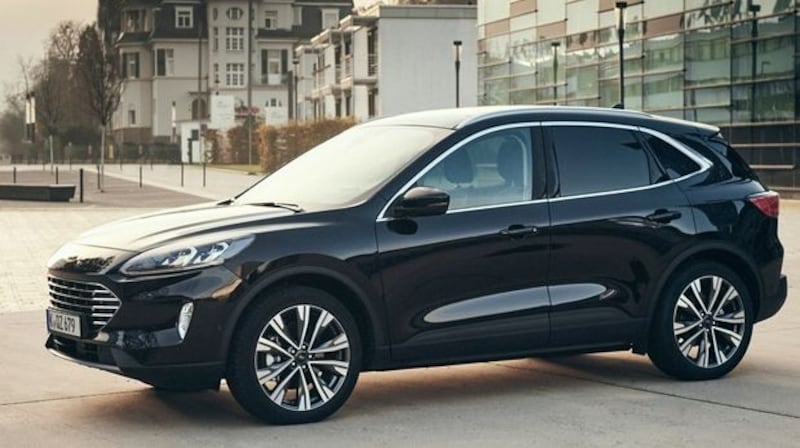
Ford's midsized SUV was, in previous generations, something of an also-ran in the hotly-contested SUV market. Good, even underrated, but arguably not as good a purchase as some others, and it often felt like a slightly half-hearted effort on Ford's part. That changes with this latest model – and, fair play to Ford, it has brought a plug-in-hybrid version to the market when most direct rivals are still gearing up their part-electric tech. That plug-in-hybrid version is arguably the best version of the new Kuga, seeing as it'll do 56km on a single charge of its batteries (and it's one of those rare PHEVs that seem to cling grimly on to electric range in the real world – with some others your battery range seems to be there one minute, gone the next). Drive far enough that you have to rely on the petrol engine (a 2.5-litre four-cylinder, running on the fuel-saving Atkinson cycle) and it will, if driven gently, return diesel-like economy figures. Best of all, though, the Kuga upholds Ford's reputation for being the mainstream manufacturer that still cares most about driving dynamics and rewarding driving. The extra weight of the PHEV's batteries means it rolls a little more than you'd want it to, but it's got good steering and, overall, impressive balance. The basic diesel version is a little simpler, and a little sweeter to drive, but the PHEV's the one to have, on balance, although the recent "battery fires" recall will doubtless have dented consumer confidence a tad.
Best model: Kuga PHEV ST-Line X, for €39,762.
Price range: €32,803 to €50,257. Finance from POA per month.
CO2 emissions: 32g/km to 159g/km.
Summed up: Efficiency mixed with fun makes for a pleasing SUV
21. Skoda Superb
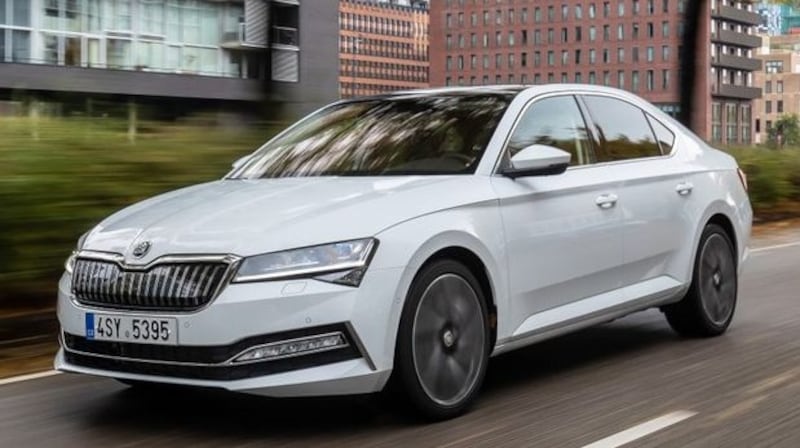
There are some traditions that need to be discarded, and some that are worth preserving. One definitely in need of keeping is the ownership of a traditional, large family saloon, a species of car best typified by the Skoda Superb. Although this type of car is fast being forgotten in the rush for SUV singularity, there is something so satisfying, so reassuring about the Superb (and, indeed, some of its rivals) that a preservation order is needed. The satisfaction starts with the quality levels; the Superb's cabin really does look and feel better even than that of the Skoda Kodiaq SUV, its closest in-house competition. Then there's the space, which gives you rear-seat passengers proper stretching room, and leaves the vast 600-odd-litre boot for their luggage and chattels. It's also refined (aside from a touch too much tyre noise) and really rather handsome from the outside. The vast Combi estate is, of course, the Superb of choice, and the pick of the engine bunch is the surprisingly frugal 1.5 TSI turbo petrol, although there is also the impressive iV plug-in-hybrid version, which works well if you can get a charge at home. The only shortcoming, really, is that it's not much fun to drive.
Best model: Superb Combi Style 1.5 TSI, for €36,995.
Price range: €30,900 to €46,785. Finance from €256 per month.
CO2 emissions: 35g/km to 180g/km.
Summed up: Simple recipe, brilliant execution.
20. Audi e-Tron quattro
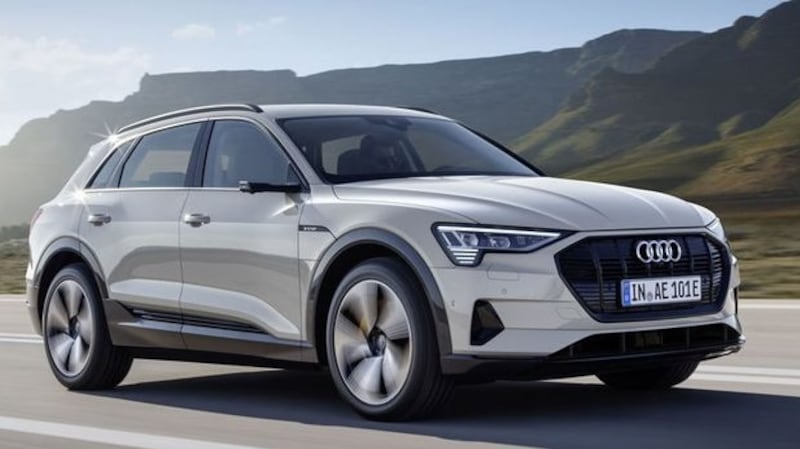
The e-Tron quattro was not only Audi's first fully electric car but also, arguably, the first car that showed how quickly the big so-called legacy carmakers were eating into the lead set by Tesla. Although the e-Tron still can't boast the same range on a single charge as any of the cars made by its California-based rival, it can certainly boast superior quality levels, as well as some pretty impressive performance. Accelerate hard in Boost mode and you'll hit 100km/h in just 5.6sec. If that's not good enough for you, a sportier S model is on the way, with three electric motors (one each for the rear wheels and a single one for the fronts), that trims the sprint time to 4.5sec (but that doesn't give you any more range, sadly). There's also the new e-Tron quattro Sportback model, which, while we normally don't care much for chop-top SUV coupés, is actually very handsome. Arguably the e-Tron's strongest hand is played inside, where the cabin – largely lifted from the A6 and A7 – is roomy and beautifully made, living up to Audi's reputation for exceptional cabin quality, fit and finish. The smaller, 71kW battery version will save you a few quid off the price, and doesn't leave you too hamstung by short range.
Best model: e-Tron Sportback 50 quattro, for €71,350 (including grants).
Price range: €71,350 to €99,810 (including grants). Finance from €764 per month.
Electric range: 336km to 440km.
Summed up: A Tesla-beater? Very nearly.
19. Hyundai Kona
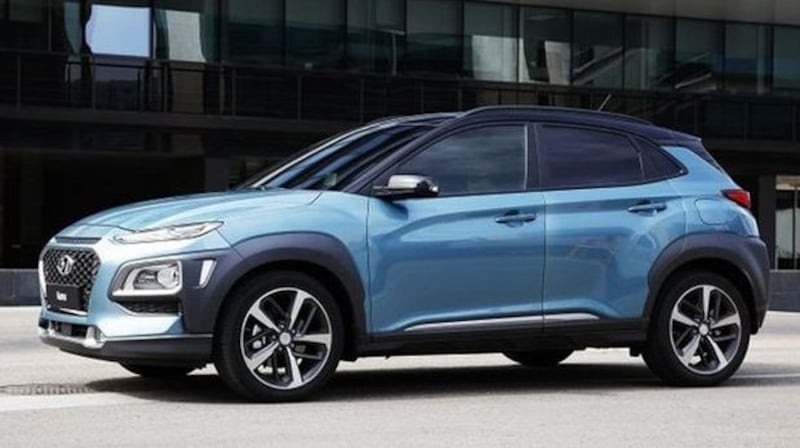
Hyundai's compact crossover hasn't quite grabbed the sales charts by the scruff of their neck in the manner of the Tucson SUV, its bigger brother, but in many ways the smaller car is the more impressive of the two. For a start it looks more interesting than the Tucson (although that only holds true until the dramatic-looking new Tucson starts arriving at dealerships), and it's certainly a little more affordable. It's also rather better to drive than the bigger car, although not quite sufficiently so for us to label it a true driver's car. That's okay, though: most buyers in this segment couldn't care less. They're much more interested in Kona's reasonable price list and in its peppy 1.0-litre T-GDI turbocharged petrol engine. They're also interested in the all-electric Kona, whose 64kWh battery means you can run the length of the country, more or less, on one charge. There's also an impressive new hybrid version in the range now, and a major styling update just around the corner, so the Kona does seem to have all its bases pretty well covered.
Best model: Kona Electric, for 37,279 (including grants).
Price range: €21,745 to €37,279 (including grants). Finance from €175 per month.
CO2 emissions: 0g/km to 125g/km.
Summed up: Neat, effective, stylish, electric.
18. Peugeot 5008
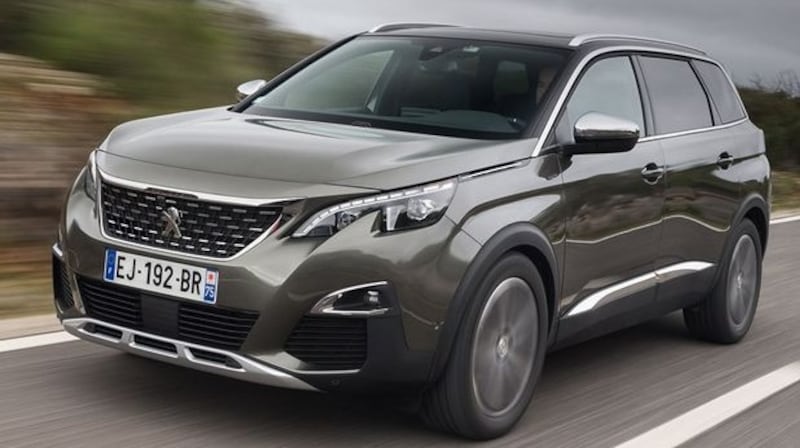
The big, roomy, family-friendly 5008 is, by all technical definitions, an SUV, but it is a car that follows in the traditional tracks of such models as the 504 Break and the 505 estate, both of which offered huge interiors and velour-lined affordable luxury for families dating back to the 1960s. The reason we like the 5008 so much is that, in spite of its being an SUV, it keeps up Peugeot's fine traditions in the family-car arena. Not least because, unique among midsize family SUVs, this one includes extra foldaway seats in the boot in the price, rather than charging an extra €1,000 for them, as do most of Peugeot's rivals. Added to which, it's a rather bluffly handsome thing (with new and, if you like it, improved styling coming early in 2021) and has a very high-quality cabin. It's not bad to drive, either – no sports car, of course, but with that small-steering-wheel layout it feels rather more responsive than you might expect. The 1.2-litre three-cylinder petrol engine is very impressive, in spite of the 5008's bulk, but alas you can't have the plug-in-hybrid powertrain used by the smaller 3008 SUV, because the seven-seat layout rules it out.
Best model: 5008 1.5 BlueHDi 130bhp, for €37,995.
Price range: €34,950 to €45,405. Finance from POA per month.
CO2 emissions: 133g/km to 151g/km.
Summed up: Family-friendly good-looking lion.
17. Volkswagen Golf
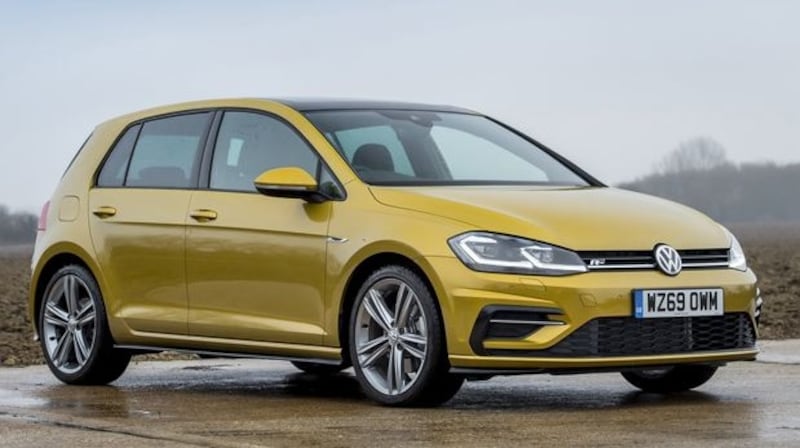
It's hard to believe, but as well as being overtaken in our eyes by its (slightly) more affordable cousins the Seat Leon and Skoda Octavia, the Volkswagen Golf is being outsold by its Tiguan stablemate. It just goes to show: make the PCP payments low enough and buyers will flock to the bigger, pricier SUV rather than the hatchback. Which is a shame. Although the switch from the Mk7 to the Mk8 Golf, earlier this year, brought not quite the leap forward we were hoping for, the eighth-generation Golf is nonetheless still as impressive a car as you'd want it to be. Low points are droopy styling at the front and agonisingly fiddly heating and air-conditioning controls inside. Oh, and some of the plastic on display in the cabin is not worthy of the Golf name. Still, as long as you get one with the independent rear suspension, it's a car that responds surprisingly well to a vigorous driving technique, while refinement and overall quality are top-drawer. Perhaps we just need the rest of the range – including two plug-in-hybrid variants and the latest GTI and R versions, all of which are imminent – for the Golf 8 to rise to its accustomed eminence. One major shame is that, thanks to a total lack of interest among Irish buyers, there's no longer option to buy the handsome and roomy Golf estate here. As a family all-rounder, that one was hard to beat.
Best model: Golf Life 1.0 TSI, for €28,255.
Price range: €24,510 to €46,335. Finance from POA per month.
CO2 emissions: 36g/km to 169g/km.
Summed up: Knocked off its perch, but still a high-flyer.
16. Audi A6
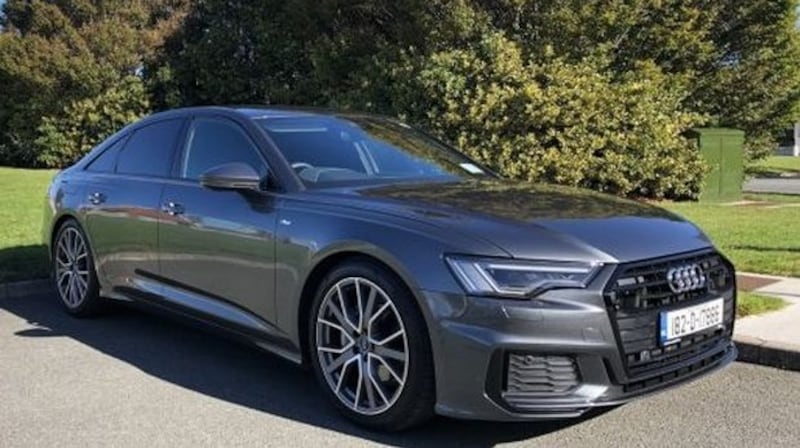
Audi's mean-looking executive car still cuts a stylish dash on the street, but better things await you inside, where you'll find one of the best car cabins around: beautifully built, spacious, airy and a very relaxing space in which to while away a traffic-snarled commute. Audi has also added a plug-in-hybrid version that, with its 53km electric range, could be an ideal way to tackle one of those traffic-snarled commutes. Oh, sure, you could spend the extra and upgrade to the muscular torquefest that is the diesel-powered S6 TDI (as close to a perfect diesel muscle car as you'll find), but given that the plug-in version has 367hp and hits 100km/h in just 5.6sec, why bother? You get the performance and the conscience-salving 43g/km emissions in the same cars (if not quite at the same time). The twin-screen interior layout takes a bit of getting used to, and there's no doubt that it's trickier to navigate such a system than one with traditional, physical air-conditioning controls, but we suppose it's something you'd eventually adapt to. The handsome Avant estate offers 565 litres of loadspace and no dynamic compromise. Indeed, the estate body forms the basis of the greatest of all A6s: the 600hp RS6, with its sledgehammer 4.0-litre twin-turbo V8 engine. Quattro four-wheel drive gives all of this some serious all-weather capability, but if you want some extra ground clearance, there's the jacked-up Allroad version.
Best model: A6 quattro TFSI-e S-Line Avant, for €74,600.
Price range: €59,600 to €160,000. Finance from €653 per month.
CO2 emissions: 43g/km to 263g/km.
Summed up: Like a bodybuilder in a tuxedo.
15. Toyota Camry
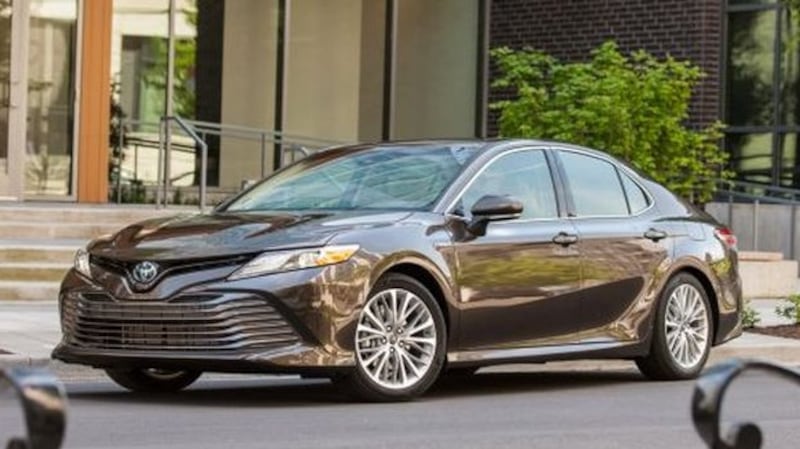
The more affordable Corolla rates higher than the Camry, but in many ways the big four-door is actually our favourite Toyota. Once a byword for the taxi rank, or being pulled over by the Garda traffic corps, the modern, hybrid Camry has evolved a little into something that's surprisingly stylish (yes, really) and is really a Lexus ES300h in a more stolid suit of clothes. There is only one version, in a mechanical sense, which uses a 2.5-litre petrol engine with hybrid assistance, and it's not the cheapest car you'll ever come across – prices start at a lofty €39,010 – but it's a car that oozes satisfaction from every metallic pore. It's also, almost without question, the perfect car if, for instance, you need to get from Malin Head to Mizen Head in one day, in total comfort, and with around 5.5-litres-per-100km economy showing on the dash. Seriously, to get much more refined and comfy than the Camry you'd pretty much have to trade up to a Merc S-Class. Downsides? The cabin looks a bit old fashioned, and the infotainment screen is smaller than most people's phones these days, plus while it's better to drive than you might think, it's no handling champ. Still, buy one today and you'll be worn out before it is, and there's nothing we like more than a hugely reliable car.
Best model: Camry Hybrid Platinum, for €42,950.
Price range: €39,010 to €37,570. Finance from €309 per month.
CO2 emissions: 120g/km to 127g/km.
Summed up: A motorised sofa – and we mean that in a good way.
14. Renault Zoe
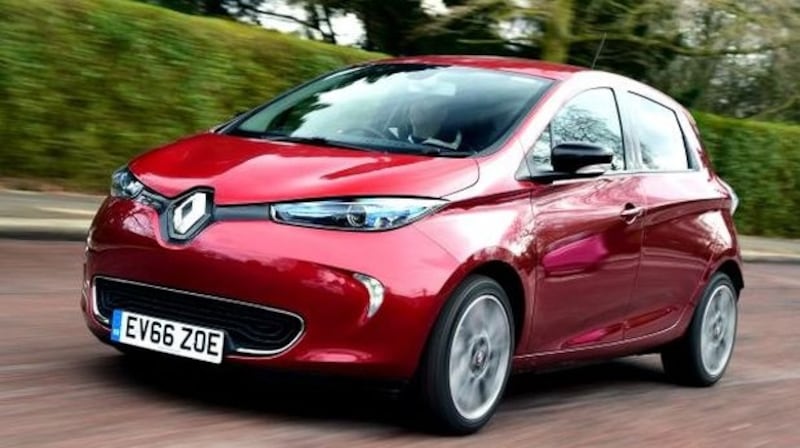
The new Zoe – well, it's actually an enormous update of the old Zoe platform, but it pretty much counts as an all-new car – has had quite the success in Europe. Even in a year affected by Covid it has risen up the sales charts, overtaking the mighty Tesla Model 3 at the pinnacle of European electric-car buyers' affections. It's not hard to see why: range. Maybe that's being a bit short with the Zoe's other attributes, but a combination of near-as-makes-no-odds 400km one-charge range and a price tag starting (in Ireland) with a €2 means the Zoe's appeal isn't hard to decode. Even with the air con going and a motorway journey ahead of you, you should still be able to get 270-300km out of it, and thanks to a clever on-board charging system it can take in a charge very rapidly indeed. It's also comfy inside (albeit the cabin remains rather narrow), and it's noticeably better-made in the cabin than the related Renault Clio. It's even pretty roomy, certainly more so than direct rivals such as the Peugeot e-208 and Opel Corsa-e, even if it's not as sharp to drive as either of those. It's also historically significant – so successful has the Zoe been that its emissions-saving tech means Renault (founded in 1896, remember) is now rivalling Tesla in its ability to trade CO2 emissions credits with other carmakers.
Best model: Zoe Iconic R135 CCS, for €30,324.
Price range: €26,470 to €31,307. Finance from €329 per month.
Electric range: 395km.
Summed up: Lots of range for not much money.
13. Jaguar I-Pace
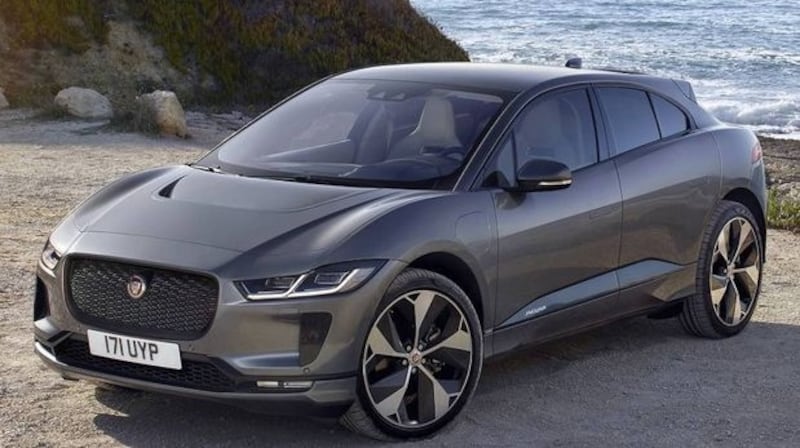
One of the first truly popular electric cars on the road remains one of the best electric cars you can buy. Although the I-Pace will only rarely, if ever, deliver on its promise of a 470km one-charge range, it will do so in a way that most other electric cars struggle to match – by which we mean it's fun to drive. Twin electric motors, one for each axle, mean you have 400hp to play with, and a whopping 696Nm of torque. That means acceleration to 100km/h in just 4.8sec, but then many big-battery, big-motor electric cars can do that. The I-Pace's difference is in its steering and its air suspension, which Jaguar has tuned for maximum enjoyment. Most other electric rivals, focused far more on range and efficiency, seem to have forgotten that cars are supposed to be fun to drive. In being so, and being properly, big, grin-inducing fun, the Jag gives us hope for the battery future. Plus, it's spacious, handsome, well put together (it's actually made in Austria for Jaguar by Magna-Steyr), and although it's very expensive it's not out of line, pricewise, with its major rivals. Jaguar has given the I-Pace some minor updates (including battery improvements that it claims come straight from its electric Formula-E racing experience) that have kept it in the game against newer rivals.
Best model: I-Pace SE, for €101,140 (after grants).
Price range: €91,755 to €108,740. Finance from POA per month.
Electric range: 470km.
Summed up: Battery Jag is best Jag.
12. Toyota Corolla
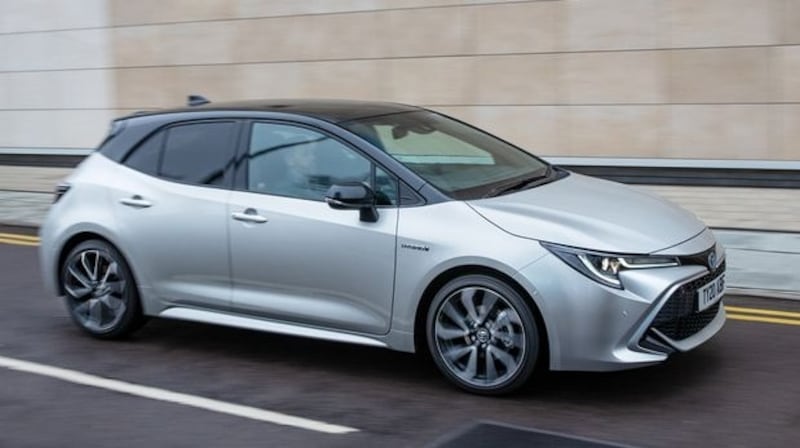
The arrival of the new Volkswagen Group hatchbacks, and our growing love for the Mazda 3, have pushed the Corolla down a little in our affections, but it's still an excellent car. This is also the most stylish Corolla since the 1980s Corolla Sprinter fastback (ask your gran), and it's surprisingly engaging to drive, with good steering and a chassis quite clearly tuned by people who understand what a corner is, and what to do with one. Quality is also, rather more predictably, excellent, and the hybrid-engine line-up seems to improve all the time. It's less minded to drone incessantly under acceleration any more, and real-world economy, for the 1.8-litre version, is in the 60mpg ballpark. On top of which Toyota claims that its hybrids can spend as much as 70 per cent of a given journey running on just battery power. However, our recommendation of the Corolla relates only to the estate, or Touring Sports, version. The hatch is handsome, but it's just too tight in the back and boot to be practical. You could go for the saloon version, but Toyota has (deliberately) made that look rather less interesting, so estate it is: the longer wheelbase ensures decent rear-seat space, while the 600-litre boot is hugely practical. Also on the avoid list is the 2.0-litre hybrid engine, which has more power but isn't especially satisfying to drive.
Best model: Corolla 1.8 Hybrid Touring Sports Sol, for €32,530.
Price range: €29,885 to €35,990. Finance from €249 per month.
CO2 emissions: 112g/km to 116g/km.
Summed up: Part-electric performance, but make sure you get the estate
11. Skoda Octavia
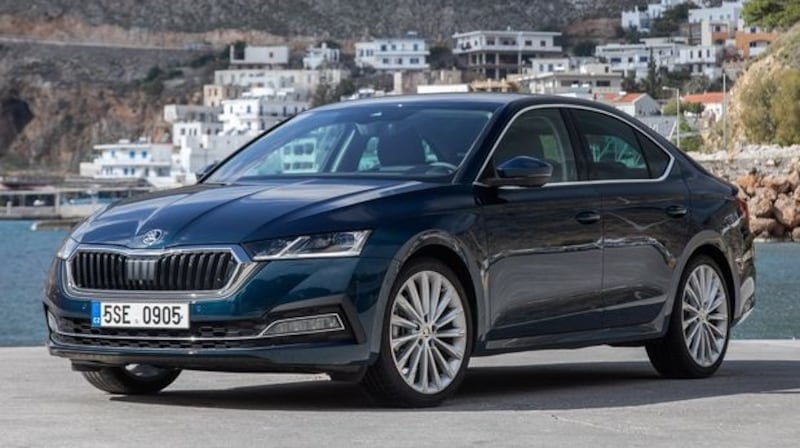
Ludicrously capable. That's the phrase that kept running through our heads while driving the new Octavia. Okay, so it was the Combi estate model, which adds 30 litres or so to the Octavia's already commodious accommodation, but even if you were just to buy the standard fastback saloon model, the new Octavia is an object lesson in why you don't need to buy an SUV. It's a smart-looking thing, the Octavia. Carrying over the same chassis from the old one means the silhouette is more or less identical, but the details look smoother this time around. The cabin, built in minimalist fashion around two screens, still manages to look welcoming, and is certainly well made, and we love the use of tweed fabric in place of more predictable fake wood or just more plastic. Comfort and space were clearly priorities, as was refinement. You can have it as a mild-hybrid petrol with either a 150hp four-cylinder 1.5 engine or the brilliant little 1.0-litre three-cylinder, but actually there's still appeal in the big torque of the 2.0-litre TDI diesel version. For those with an I Heart Greta badge, a plug-in-hybrid version is on the way, as is a trio of sporty RS models. Pipped to the post by its cousin the Seat Leon it may be, but the new Octavia is still, well, it's ludicrously capable.
Best model: Octavia Combi 1.0 eTSI DSG Ambition, for €29,750.
Price range: €23,950 to €32,350. Finance from €239 per month.
CO2 emissions: 102g/km to 144g/km.
Summed up: Something about "capable" and "ludicrous".
10. Mazda 3
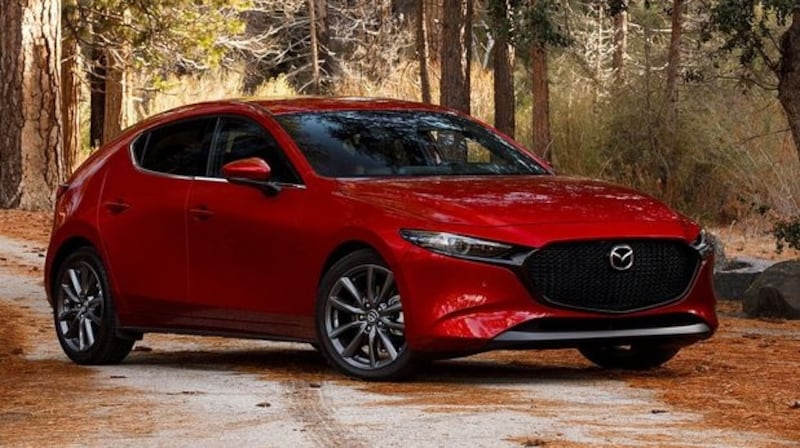
Mazda's sharply styled family five-door has the rest of the class (even the handsome Seat Leon) licked for looks. From that ground-hugging gaping grille to the pert rear end, it's one of the best-looking cars (not just hatchbacks) around. Okay, so that rating is a touch spoiled by the slightly more pedestrian looks of the four-door saloon version, but then the benefit of the saloon's staid styling is that it gets more light into, and better views out of, the back seats – a failing of the darker rear accommodation of the hatch. The rest of the cabin is pretty excellent, though. We like Mazda's relatively minimalist look, and quality levels are off-the-scale good. Comfort, too: the 3's a friendly companion on a long journey. A fun one, as well: with sharp steering and excellent body control, the 3 is seriously enjoyable to drive, with only a too-firm urban ride spoiling the party. Enginewise, it can be hard to wrap your head around the 2.0-litre, non-turbo offerings, but in the real world they're as efficient as most rivals' smaller engines. The clever SkyActiv-X engine is tricky to get the best from, but the regular 122hp engine is pretty much as good, and both are mild-hybrid units. The 1.8 diesel is excellent but relegated to supporting-cast status these days. A little pricier than most rivals, but better-equipped as standard.
Best model: 3 hatch 2.0 SkyActiv-G GT, for €31,320.
Price range: €27,970 to €37,570. Finance from €230 per month.
CO2 emissions: 131g/km to 147g/km.
Summed up: Sexy styling and a sharp chassis.
9. Land Rover Defender
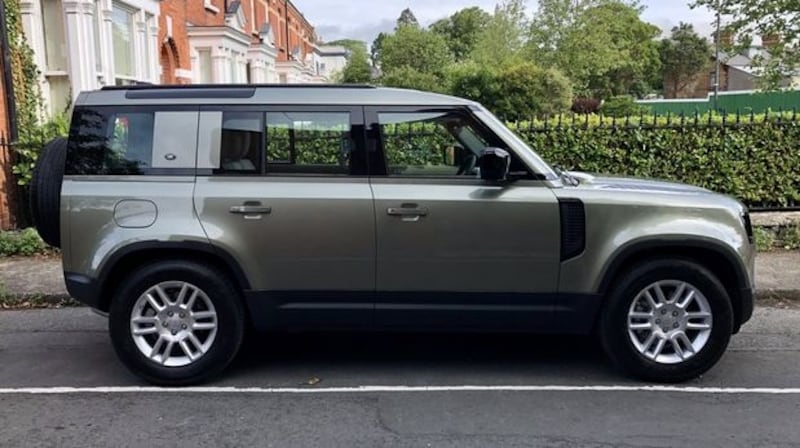
Normally, when we say a new car is long awaited we mean it's been maybe five or six years since the current version was launched. With the Land Rover Defender we've been waiting since 1983 for an all-new version of the evergreen 4x4. With history and, yes, iconography adding mass to already weighty expectations, it seemed that Land Rover couldn't possibly create a new Defender that could please all. Yet it has. We can quibble a little about the styling (better in short 90 form than long 110 form, but rather pug-nosed either way) all we like, but this is a vehicle (note: not a car, really, and certainly not an SUV in any conventional sense) that has about as broad a range of capabilities as you could hope to find. It will, of course, climb mountains and ford rivers better than almost any other showroom-spec vehicle you can name. Yet, unlike its predecessor, it is now an abidingly comfortable and refined vehicle in which to undertake a long motorway journey, or just trundle around town. You don't even need to wind down the driver's window to make sharp turns any more, something that will amaze a previous Defender owner. The cabin looks great – a near perfect mix between luxury and utilitarianism – and the new touchscreen is excellent. It's not for everyone. It is, after all, large, heavy and relatively thirsty, and we're still waiting for the plug-in-hybrid version, not to mind an electric one, but if you've always wanted the ultimate in four-wheeled Swiss army knives, look no further.
Best model: Defender 90 D240, for €65,670.
Price range: €59,410 to €130,455. Finance from POA per month.
CO2 emissions: 230g/km to 256g/km.
Summed up: Convincing update of a motoring legend.
8. Kia e-Soul
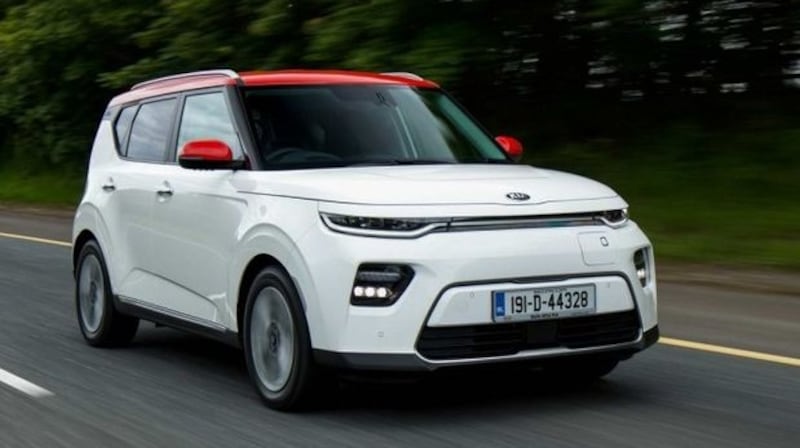
In an electric-car market that is pretty much the only growth area in Irish new-car sales right now, the Kia e-Soul stands out – and not just because of its styling (which, if you get it in white, makes it look like a Stormtrooper from Star Wars, only increasing its appeal in our eyes) but also because it's such an effective car. With a 62kWh battery, it has the sort of easy-going long-haul range to make even long motorway runs a doddle, yet with a price tag of €36,228 it's at the relatively more affordable end of the big-battery electric-car list. It's also rather good to drive: push it hard and you'll find the extra heft of all those battery cells makes for more body roll and more understeer than you'd ideally like, but it's not bad even so. The cabin, while it looks a bit black and plain compared with, say, that of Volkswagen's ID.3, is actually well made, and its infotainment system is far less maddening than that of the VW. The only real shortcoming is a slightly undersized boot. The e-Soul may not be the most cutting edge of electric cars right now, but it's a very satisfying, and conspicuously impressive, one.
Best model: e-Soul K3, for €36,228 (after grants).
Price range: €36,228. Finance from €379 per month.
Electric range: 420km.
Summed up: Oddball styling but totally sensible in all other ways.
7. Mercedes-Benz E-Class
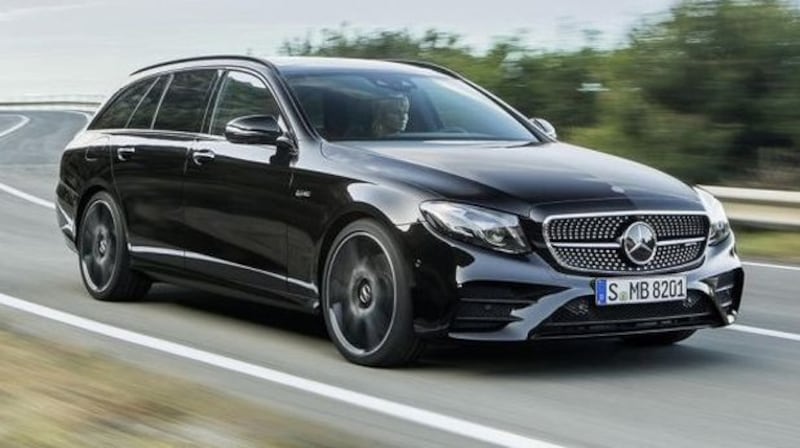
The E-class came in for a major update in 2020, although you might struggle to tell that from the outside. Really, the only physical change is a faint alteration in the outline of the radiator grille. Under the skin, the changes are more significant, with the addition of not one but two plug-in hybrids: a petrol version and a diesel. Both can go for a claimed 50km on a single charge of their battery. (Could a silent, clean, plug-in version be the saving of the big diesel saloon? We shall see.) Inside, little has changed from the previous version, which is a good thing, as nothing much needed to change. The E-Class keeps its big "digital plank" electronic dashboard, which still looks like a more interesting choice than the cabin layout of most rivals. There's a new steering wheel (with rather fiddly touch-sensitive pads, instead of buttons) and comfort and quality levels to rival those of even the mighty S-Class. It's not, and never was, the cornering nor handling king, and still cedes those crowns to the BMW 5 Series (unless we're talking about the mighty V8-engined AMG versions, of course), but as an all-rounder, as something that merely sitting into makes you feel better about yourself and the world, the E-Class remains a (pun warning) class act. The coupé version is gorgeous, but the carry-all estate is the one to have.
Best model: E220-d AMG-Line Estate, for €59,302.
Price range: €52,395 to €174,130. Finance from €591 per month.
CO2 emissions: 36g/km to 283g/km.
Summed up: Autocrat of the Autobahn.
6. Seat Leon
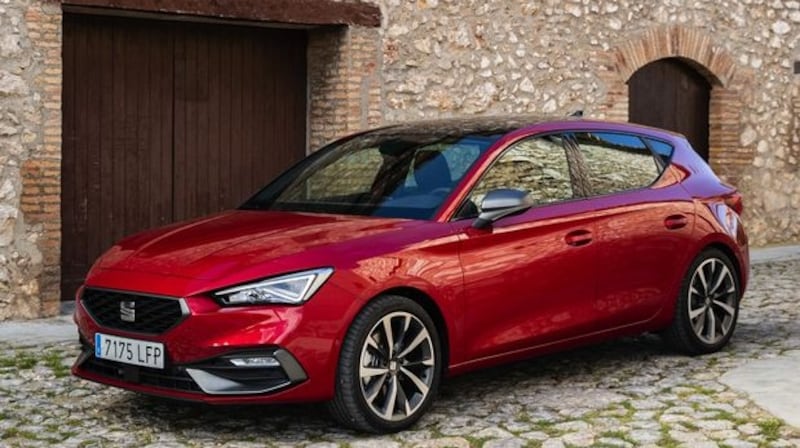
Having been for so long the bridesmaid of the VW hatchback family, the Leon stepped up to the top table this year. To be fair, getting an onion paper between the four midsize models spun off the ubiquitous VW MQB platform – the Golf, the A3, the Octavia and this – is tricky at the best of times, but the Leon just gets its nose in front this time around. Much of that is down to the way it drives. Using the same basic set of components as its stablemates means differences are shadowy and often closer to subjective than objective, but without question the Leon has the liveliest steering of the quartet, and that counts for a lot in our book. It also has a cabin that manages to look smarter than that of the Golf, and neater than that of the Audi, and is pretty much on a par with the Skoda when it comes to quality. Space is excellent, and if the 385-litre boot isn't big enough to convince you to trade out of an SUV, then there's the gorgeous ST estate model to think about. Petrol engines are the Leon's forte, and both the 1.0-litre three-cylinder version and the 1.5-litre four-cylinder can be had with mild-hybrid technology, which helps to make them a little cleaner and more efficient. Faults? The relationship between the engine and the optional DSG automatic gearbox needs work, the ride is too stiff on the optional 18-inch wheels, the infotainment software needs another pass, and the "slider" controls for the heating are just way too fiddly. Other than that, this handsome five-door is a great family hatch.
Best model: Leon 1.0 TSI Xcellence, for €26,710.
Price range: €23,680 to €32,090. Finance from €191 per month.
CO2 emissions: 111g/km to 134g/km.
Summed up: Smart-suited Spanish star.
5. Tesla Model 3
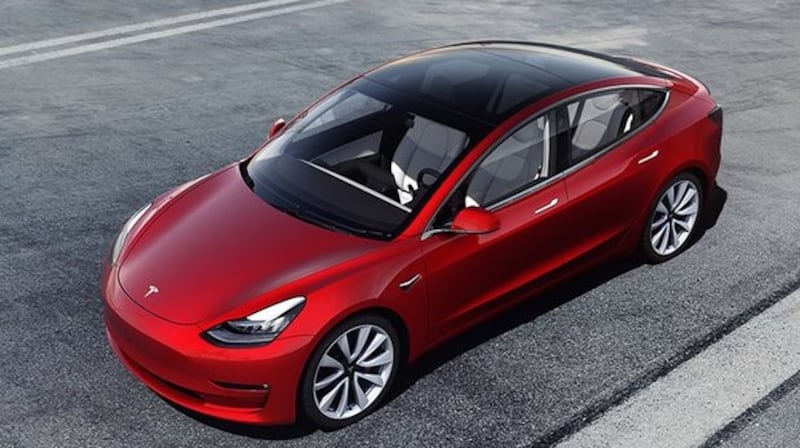
Tesla's gold-mine model continues to impress, although there's no denying that other carmakers are starting to overhaul the California upstart. Then again, Elon Musk did always say the whole point of Tesla was to spur the world's carmakers into electric action, so let's see if that still holds true now the competition is heating up. Then again, the 3 doesn't really have any competition. No one else yet makes a midsize four-door sports saloon, priced at less than €50,000 (once you count the grants), with electric power and a range of more than 400km. BMW's plug-in-hybrid 330e is arguably the 3's closest rival, but that still has a petrol donkey up one end, so does that count? The 3's performance, in terms of both acceleration and range, are hugely impressive. Less so are the sometimes disappointing quality and the marketing of "self-driving" (they're not) electronic aids. Then again, quite apart from the car, the best thing about the 3 is Tesla's exclusive Supercharger charging network, which demonstrates how easy long-haul electric motoring can be if you have plentiful fast (properly fast) chargers that actually work.
Best model: 3 Long Range Dual Motor, for €57,990 (after grants).
Price range: €47,990 to €64,490 (after grants). Finance from €511 per month.
Electric range: 430km to 580km.
Summed up: Glitches remain, but Model 3 still shows the way forward.
4. BMW 3 Series
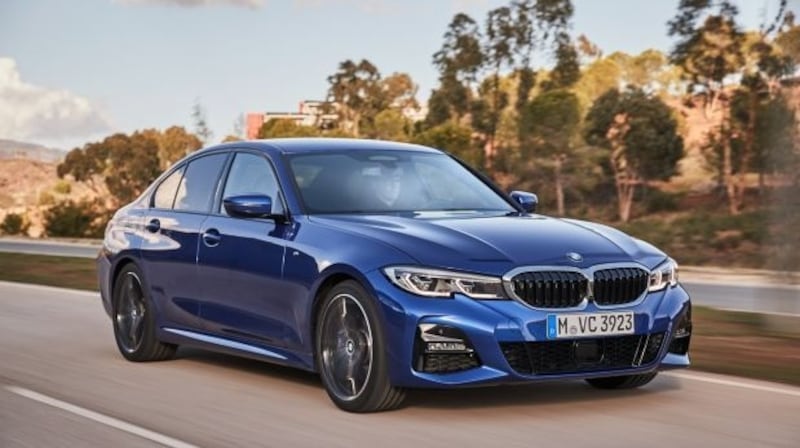
Last year's number one continues to make an unsurprisingly compelling case for itself, not least because it's one of the ever-decreasing number of BMWs that doesn't appear to have had its styling ruined by oversized grilles (hello, new iX, hello, 4 Series). While you may take the 3's styling according to your own taste, underneath there is definitive proof that the hearts and minds of BMW's engineers are very much still in the right place. As one of those engineers told us of working on a 3 versus an SUV model: "All the masses are in the right place." They sure are, and that lends the 3 Series a sense of on-road fluency and fluidity that's increasingly rare. From its sharp steering to its iron-fisted body control, the 3 remains the essential German sports saloon, and backs that up with a beautifully made interior. The 330e plug-in hybrid should give you a good reason to ditch the default diesel and go at least partly electric, while the muscular M340i is a good reason to give the big-nostrilled new M3 a swerve. The Touring estate is, as ever, the pick of the bunch, combining practicality with smart-suited good looks.
Best model: BMW 330e M-Sport Touring, for €55,070.
Price range: €41,099 to €75,510. Finance from €368 per month.
CO2 emissions: 37g/km to 189g/km.
Summed up: Still the ultimate saloon.
3. Ford Puma
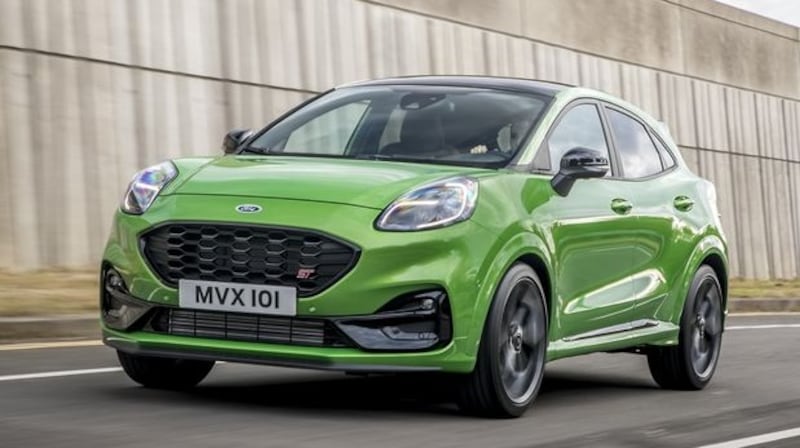
Sneaking in just ahead of our number one car from last year, the Puma reaffirms our faith in Ford as a brand. For a start, the Puma takes the small-crossover class and administers a hefty dose of driving fun. Hitherto, small crossovers had been mostly bland, and rarely enjoyable to drive. By taking the platform from the sharp-driving Fiesta hatchback, and adding length to the wheelbase and width to the track, Ford has given the Puma delightful reflexes, an engaging demeanour and – so rare these days – outstanding steering. Do regular car buyers care about such things? Possibly not, but we wager they'll enjoy driving it all the same, and will either way enjoy the reasonably roomy cabin and the big, practical boot with the useful "Megabox" underfloor storage. The mild-hybrid versions of the 1.0-litre EcoBoost turbo three-cylinder engine feel willing and muscular far above what you'd expect of a small power unit, and if the cabin looks a little dark and plain, then at least it's well made. Entering a class of mostly mediocre crossovers, the Puma proved an unexpected delight.
Best model: Puma 1.0 125hp MHEV ST-Line, for €26,019.
Price range: €24,893 to €30,335. Finance from POA per month.
CO2 emissions: 124g/km to 132g/km.
Summed up: Classic name returns with unexpected brio.
2. Peugeot 208 and e-208
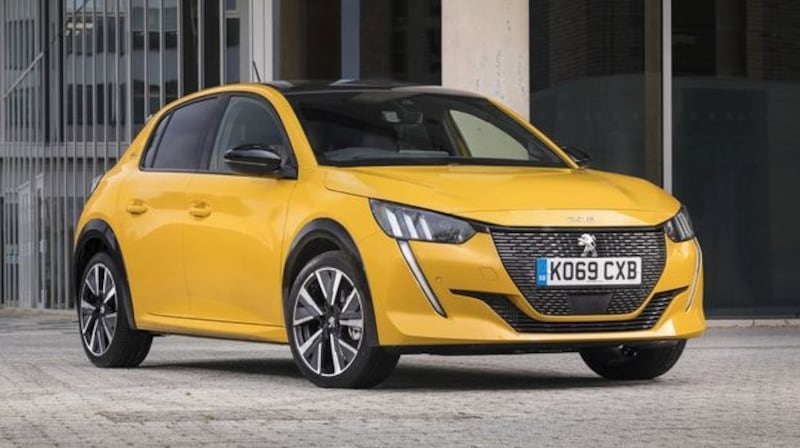
The reigning European car of the year, Peugeot's reinvented small hatch feels as if it might be the biggest leap forward for the class since the original 205, from 1983. For a start it's strikingly stylish, and its angular lines, with that protruding grille, work better here, on the 208's pert shape, than they do on the larger, blockier 2008 crossover. Inside is a riot of shapes and surfaces, plus the de-rigueur Peugeot small-wheel-high-instruments layout, which will infuriate some but at least provides a solid point of differentiation. Overall quality is excellent, but we could do without the fiddly touchscreen controls, and could do with a little more legroom in the back. Still, the 208 is supersweet to drive, with light but zesty steering and a healthy appetite for corners. The basic 75hp three-cylinder 1.2 petrol is all the engine you need in a 208, but the headlines will go to the electric e-208, with its 136hp electric motor, 50kWh battery and 350km one-charge range. Pricey though it is (€10,000 more than the basic petrol model, even after grants), the e-208 is a hugely impressive EV: smooth and refined but still fun to drive, and with city-to-city range in the battery. Fun fact: the e-208's 0-100km/h time is virtually the same as that of an original 205 GTI. There's progress for you.
Best model: e-208 Allure, for €28,470 (after grants).
Price range: €17,995 to €32,380. Finance from €191 per month.
CO2 emissions: 0g/km to 134g/km.
Summed up: Combo of small, sexy and French is hard to beat.
1. Volkswagen ID.3
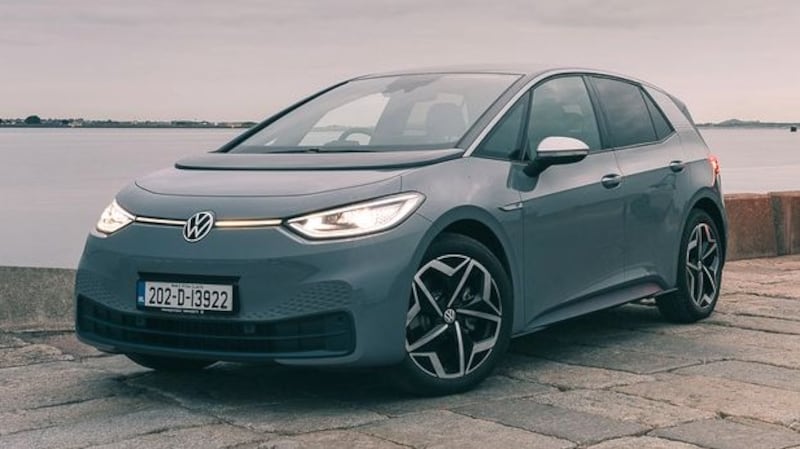
VW's first from-the-ground-up electric model is a major leap from the old e-Golf. The battery Golf had a range of just 160km. The ID.3 can stretch its electric legs to 542km, or at least it will once the big-battery, 77kWh version arrives, next year. In the meantime it still has a pretty good range, with around 420km possible from a charge of the mid-line-up 58kWh battery version. What's remarkable about the ID.3, though, is not its electric ability but its abilities as a regular car. In developing its all-new, all-electric MEB platform, VW might have been forgiven for concentrating on the battery rather than the chassis, but actually the ID.3 is great fun to drive. Not Porsche Taycan fun, as such, but smooth (even on big, 19in alloy wheels), refined and very precise. It doesn't feel like a Golf to drive, per se, but you can sense the family resemblance. As with everything in life, there are some issues. The software for the two screens that take care of all of the car's functions is glitchy and annoying, while cabin quality feels a little underbaked in places. There is, we feel, greatness in its bones, though, and if VW can sort the screens (which can be done over the air, while you sleep), then the ID.3 is possibly the most significant new car of this new decade.
Best model: ID.3 Style 204hp 58kWh, for €37,195 (after grants).
Price range: €32,650 to €42,350 (after grants). Finance from €329 per month.
Electric range: 418km to 542km.
Summed up: Ground-breaker, albeit still in need of polish.


















